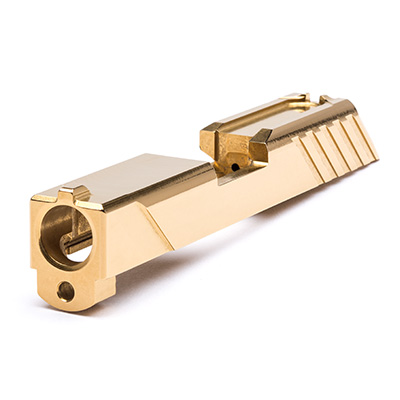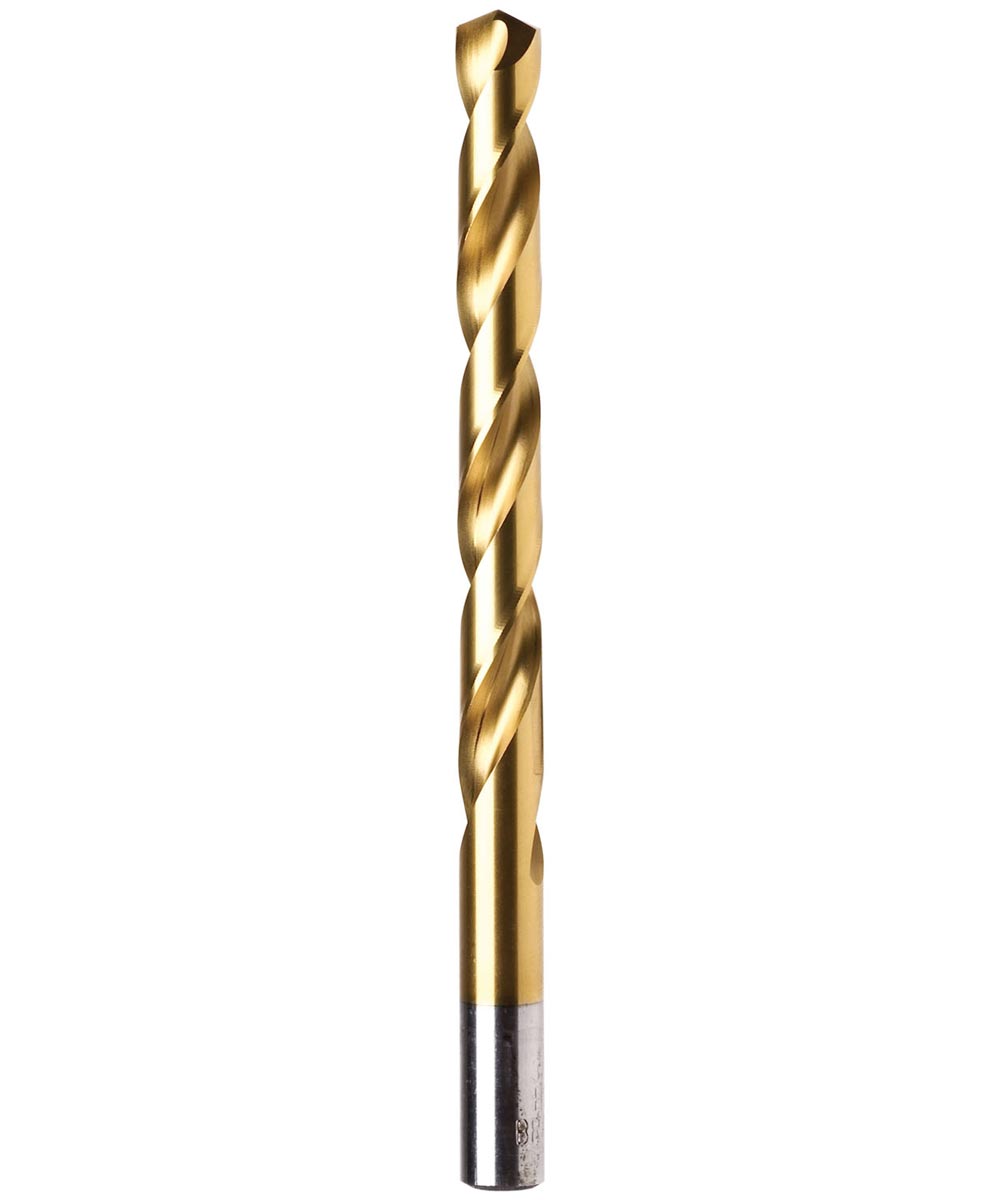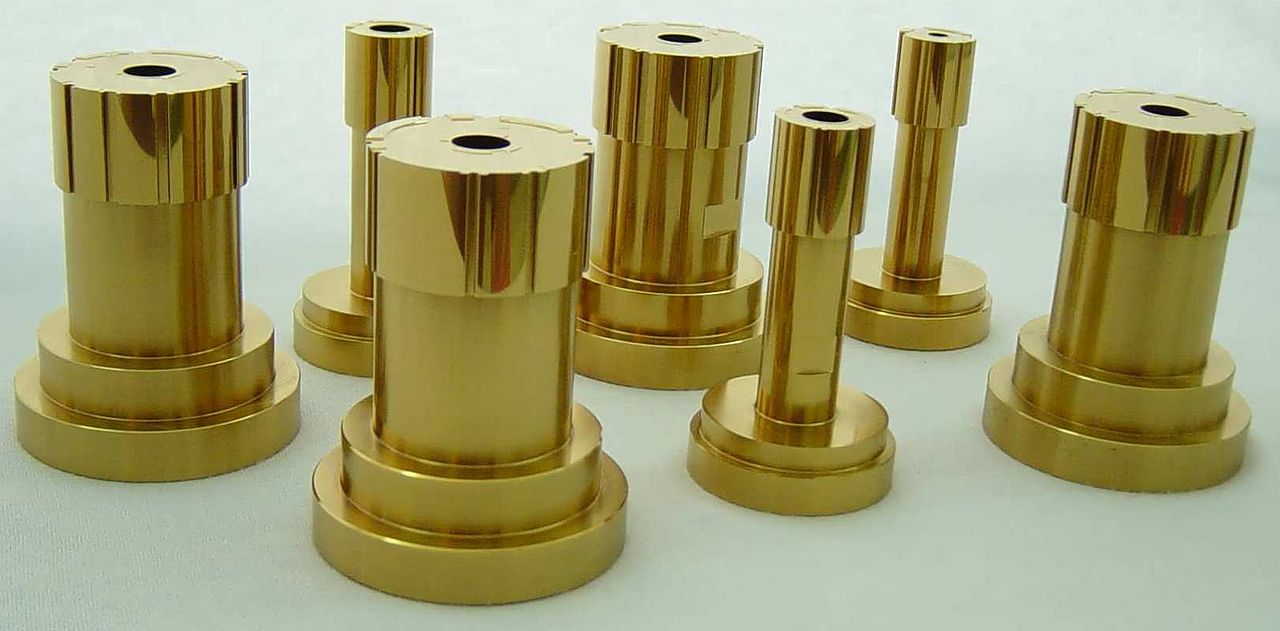Finishes
MIL-A-8625F Black Chrome
MIL-C-14538C Black Oxide
MIL-C-13924C Cadmium
QQ-P-416F Chemical Films
MIL-C-5541E Chemical Finish; Black
MIL-F-495E Chrome
QQ-C-320B Copper
MIL-C-14550B Electroless Nickel
MIL-C-26074E
AMS-2433B Electropolishing
(NO MIL SPEC) Gold
MIL-G-45204C Hard Anodize
MIL-L-46010D Laser Engraving
MIL-STD-130 Lubricant, Solid Film
QQ-P-416F Magnesium Processes
MIL-M-3171C Magnesium Anodic
MIL-M-45202C Nickel
QQ-N-290A Palladium
MIL-P-45209B Passivate
ASTM A967
QQ-P-35C Phosphate Coating; Light
TT-C-490D Phosphate Coating; Heavy
DOD-P-16232-F Powder Coating
MIL-DTL-53039 Rhodium
MIL-R-46085B Salt Bath Nitriding
SAE AMS 2755 Silver
QQ-S-365D Teflon
(No mil spec) Tin
MIL-T-10727C Tin Lead
MIL-P-81728A Titanium Nitride
(PVD) Vacuum Cadmium
MIL-C-8837B Zinc
ASTM-B633
Anodize Type II (Sulfuric)
[MIL-A-8625F]
Anodizing is a conversion of the aluminum surface to practically pure aluminum oxide: the anodic coating (a true ceramic). Type II is of particular interest to the designer wishing to extol both the virtues of form and function. Allowing for radiant colors; full coverage; full coverage. This anodic coating is significantly more abrasion and corrosion resistant then the untreated metal. This coating may be subsequently dyed in a variety of colors, imparting a very decorative finish both in a satin and a polished surface result. Limitations to these virtues vary according to the alloy and fab method. The casting alloys being the most difficult to work with.
FAQs:
Q: Can anodic coatings be stripped off?A: Yes. With some loss of base metal. Critical surfaces may be masked during stripping.
Q. Can assemblies of aluminum and other metals be anodized together.
A. Yes. In most cases the non aluminum part will be etched significantly.
Q. Is Type II anodizing the same as Hard Anodizing.
A. No! Hard Anodizing is Type III. It is a significantly harder and thicker coating.
Q. Can my aluminum firearm receiver be anodized?
A. Absolutely! Most aluminum receivers are anodized at the factory and can be stripped and re-anodized when showing signs of wear.
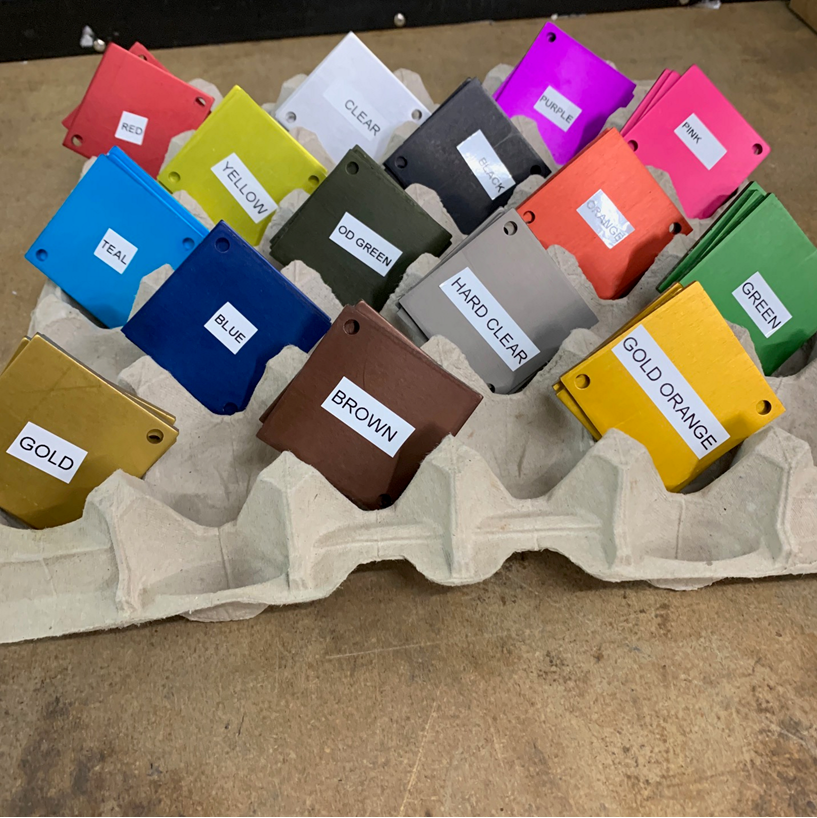
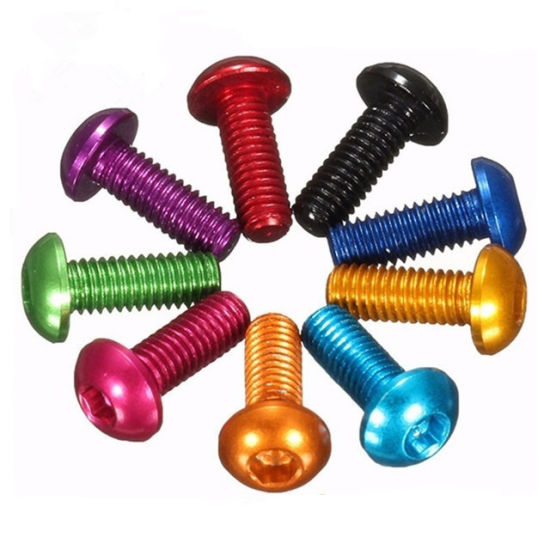
Black Chrome
[MIL-C-14538C]
Black Chrome is a semi hard, non-reflective, abrasion-resistant, heat and corrosion resistant coating (approximately .0002” thick). The Black Chrome finish can be rendered very lustruous for consumer decoarative applications; and clear coated for a functional use. The Black Chrome process has poor throwing power; and conforming anodes are necessary for coverage on intricate shapes. This coating is applied after heat treating and all mechanical operations are performed.
The Black Chrome surface may be waxed or oiled to darken the surface. Coating provides limited corrosion protection, but added protection can be obtained by specifying underplate such as nickel or copper.
The coating color is a dull dark gray, approaching black; and becomes (black) pearl-like when polished. It shall approximate color plate 37038 of Fed. Std. No. 595. Steel parts with Rockwell hardness in excess of Rc 40 shall be stress relieved prior to plating by baking one hour or more at 300° F to 500° F and baked after plating 375 F° ± 25 F° for 3 hours minimum for induced hydrogen embrittlement relief.
Applications include:
Plumbing fixtures; Firearms (over hard chrome); Laser usage components; Neuclear sighting gauges; light absorption components.
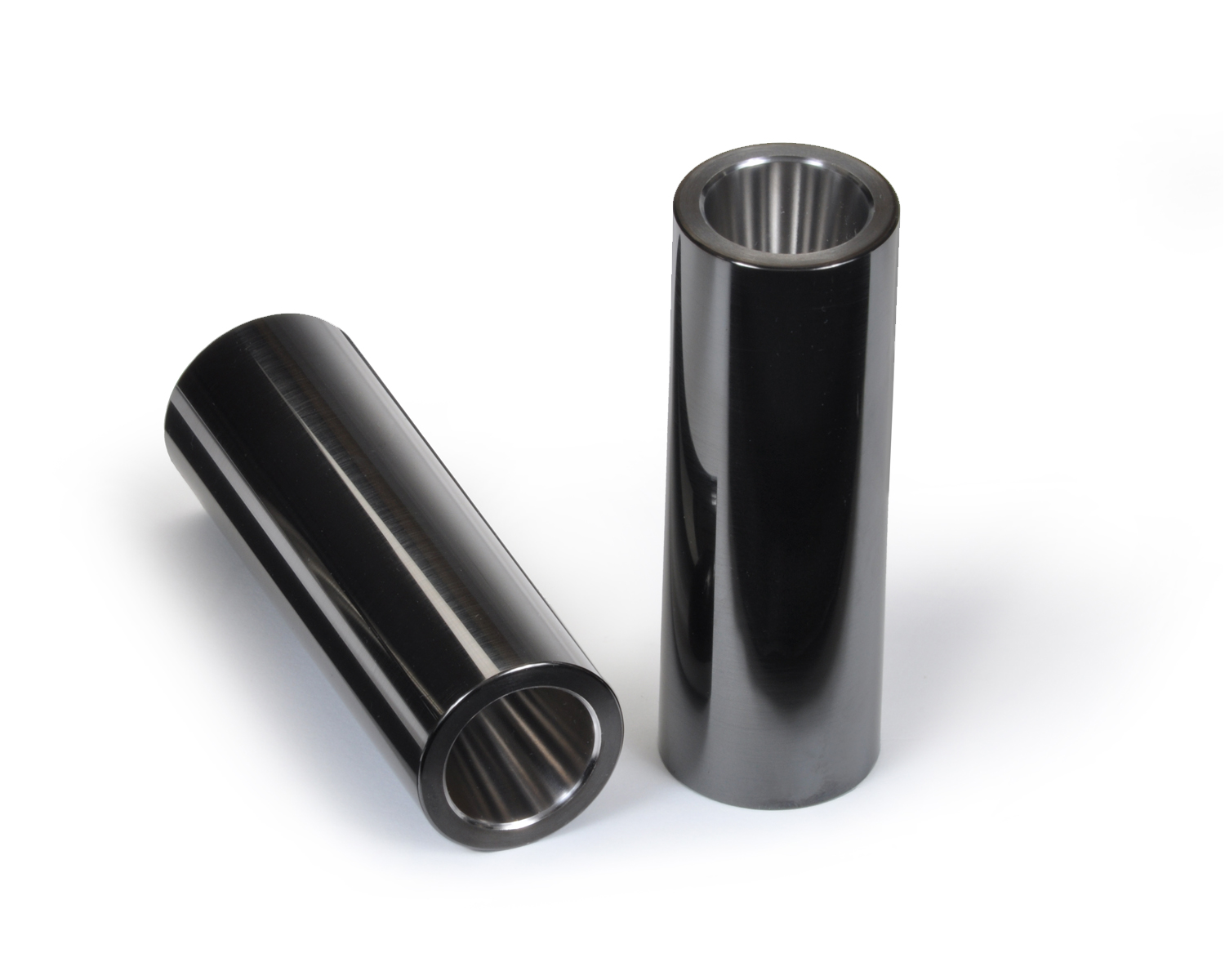
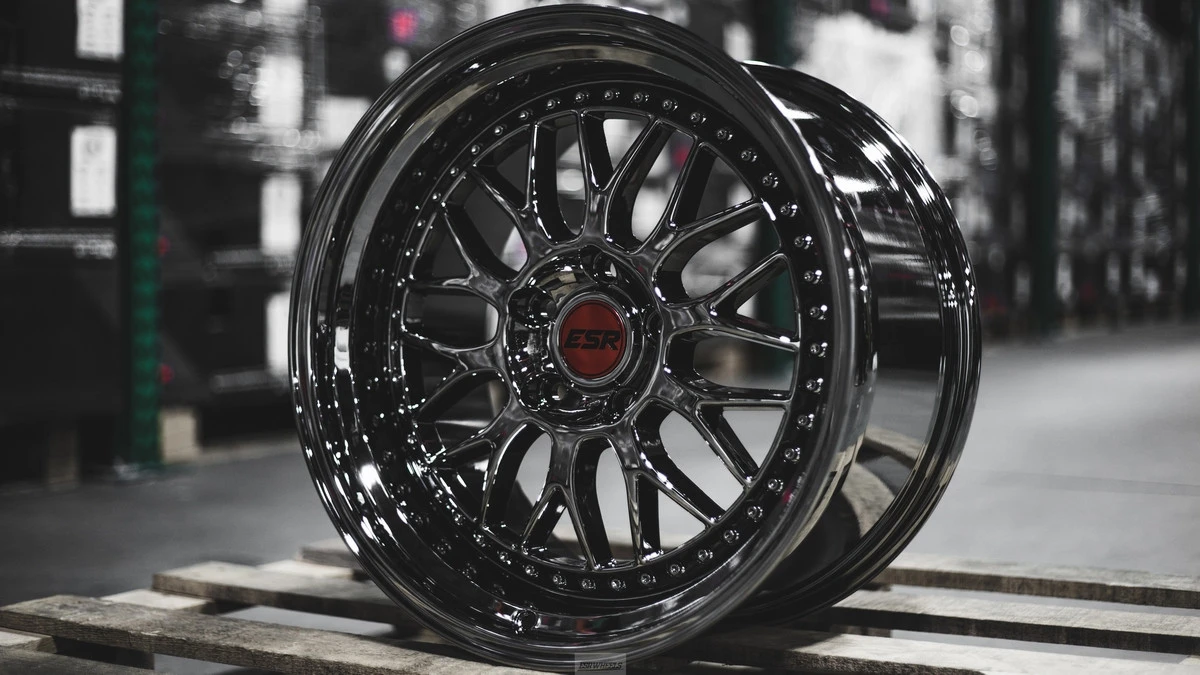
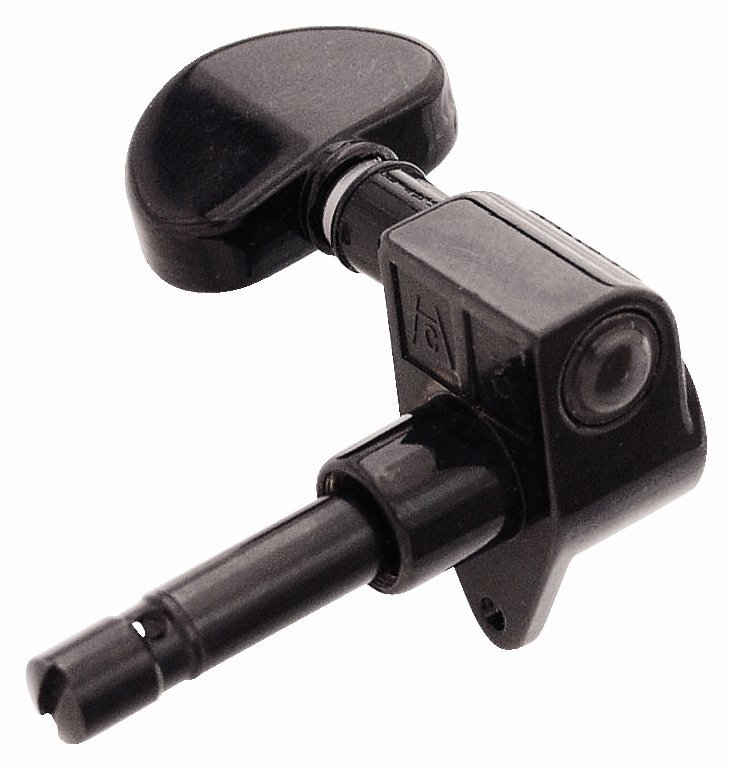
Black Oxide
[MIL-C-13924]
Black oxide is a conversion coating that causes virtually no dimensional change. It is a uniform continuous conversion of the existing metal to a black form of rust. Used primarily on components where tight tolerances are paramount; mostly as a decorative coating. Only very limited corrosion protection under mildly corrosive conditions. Should be kept oiled. For moving parts which cannot tolerate the dimensional change of a more corrosion-resistant finish black oxide coatings should normally be given a supplementary treatment (i.e., oil displacement per Mil-C-16173 Grade 3 or protective treatments of Mil-C-16173). For decorative applications and can be used to decrease light reflection.
Class 1:Alkaline oxidizing. For wrought iron, cast and malleable irons, common carbon, and low alloy steels.
Class 2:
Alkaline oxidizing. Use on certain corrosion resistant steel alloys tempered at less than 900°F
Class 3:
Fused salt oxidizing. For corrosion resistant steel alloys which are tempered at 900°F (482°C) or higher.
Class 4:
Alkaline oxidizing. For other corrosion resistant steel alloys.
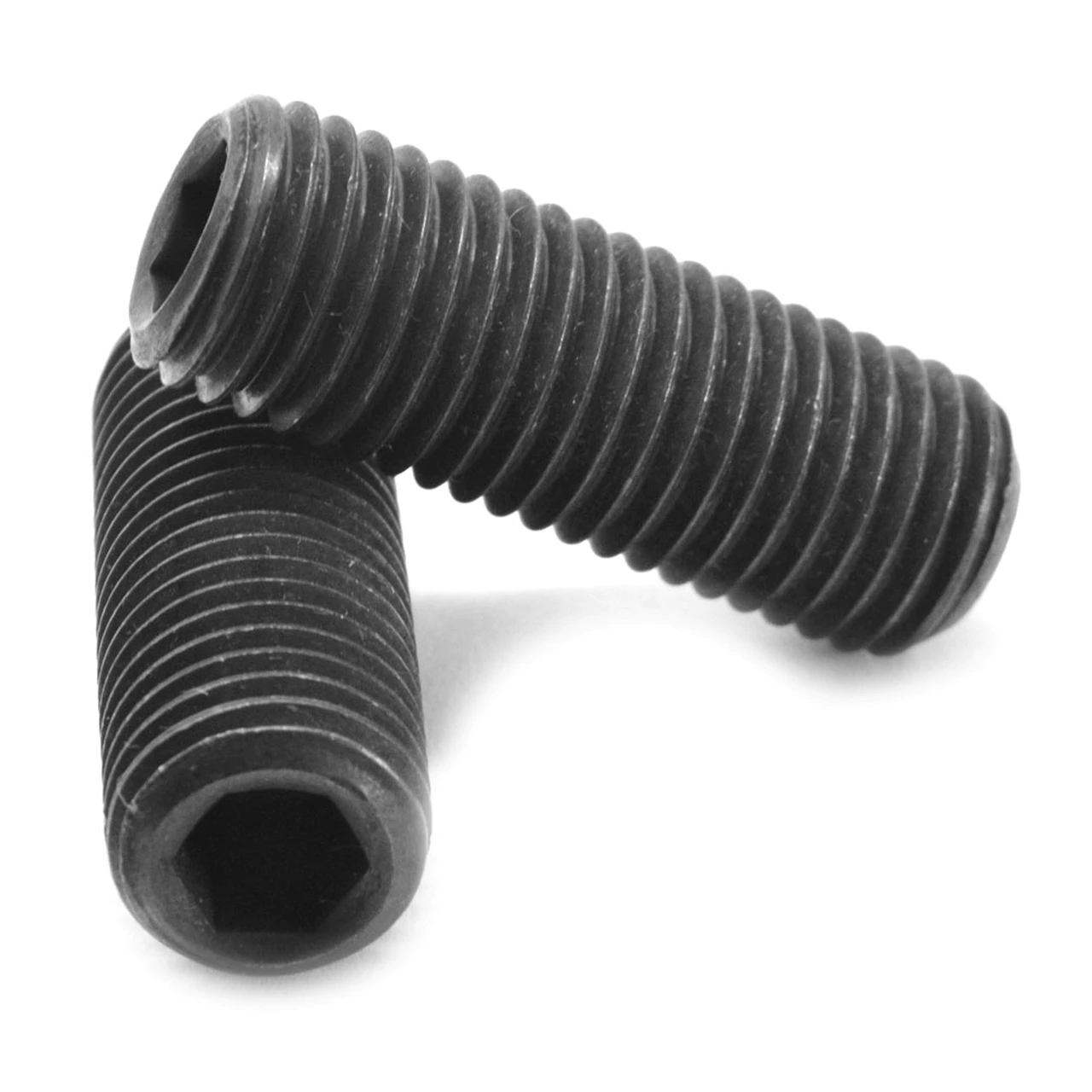
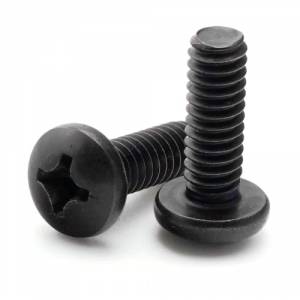
Cadmium
[MIL-C-13924]
Cadmium (Cad) is a bright silvery white metal deposit (as plated). Supplementary treatments for type II can be golden, iridescent, amber, black, olive drab, or clear. All enhance the corrosion resistance of the coating.
Corrosion resistance is very good, especially with type II finish. The cadmium plating is smooth, adherent, uniform in appearance, free from blisters, pits, nodules, burning, and other defects when examined visually without magnification.
Luster: Unless otherwise specified, the use of brightening agents in plating solution is prohibited on components with a specified heat treatment of 180 Ksi minimum tensile strength (HRc 40) and higher. Either a bright (not caused by brightening agents) or dull luster shall be acceptable. Brighteners may be used with alloys listed in paragraph 3.2.8 of the specification. Parts which have been machined, ground, cold formed, or cold straightened after heat treatment shall receive stress relief bake in accordance with table I or Ia of the specification prior to shot peening, cleaning or plating. All parts shall be baked within 4 hours of plating as specified in tables I of this specification. Baking on Types II and III shall be done prior to application of supplementary coatings.
For Class 1 and 2 the minimum cadmium thickness requirement shall be met after the supplementary treatment.
Excellent for plating of stainless steels that are to be used in conjunction with aluminum to prevent galvanic corrosion.
Cadmium deposits should not be used when an alternate process meets the performance requirements of this specification.
Applications Include: Fasteners; Aircraft Components; Automotive Components.
Type I: As Plated
Type II: Supplementary chromate treatment. Type II plating shall not show white corrosion products of cadmium, pitting, or basis metal corrosion products at the end of 96 hours (20%) salt spray exposure per following table:
Unless otherwise specified, chromate treatment required for Type II is distinctly colored iridescent bronze to brown including olive drab, black and yellow (gold).
Type III: Supplementary phosphate treatment. Type III shall conform to Type I of TT-C-490. Type III is used as a paint base.
Class 1: .0005" minimum thickness
Class 2: .0003" minimum thickness, additional thickness requirements are given in paragraph 3.3.1 amendment 2, of this specification.
Class 3: .0002" minimum thickness.
| Type | Class | Test period for white corrosion products (hours) |
|---|---|---|
| Type II | Class 1 | 96 |
| Class 2 | 96 | |
| Class 3 | 96 |
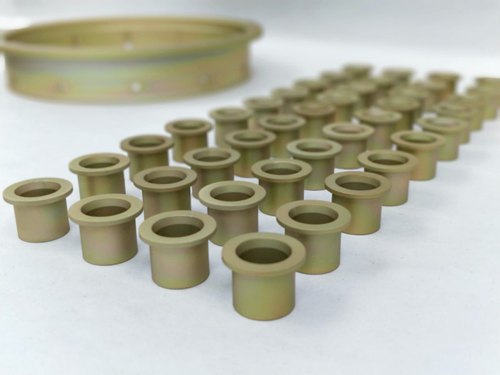

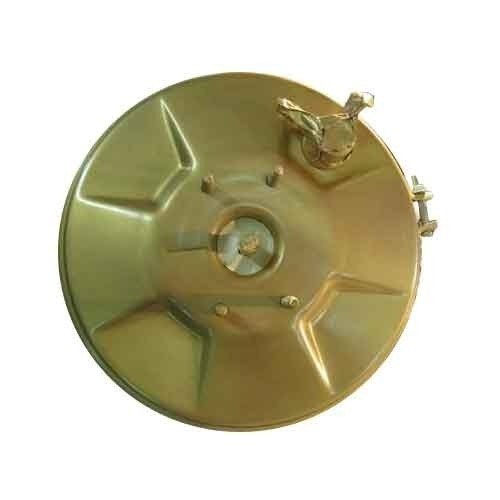
Chemical Films
[MIL-C-5541E]
Chemical Film ( chem film) coatings are gelateneous films which provide some sort of a barrier medium to retard corrosion on aluminum surfaces and enhance adhesion of subsequent coatings such as paints and primers. Materials qualified produce coatings that range in color from clear to iridescent yellow or brown; are electrically conductive; and impart some measure of corrosion protection. Inspection difficulties may arise with clear coatings because visual inspection does not always reveal the presence of a break in the coating.
Applications include: anodized components (where specific surfaces require electrical conductivity); aluminum stampings; electronic components.
Class 1A: Chemical conversion coatings are intended to provide corrosion prevention when left unpainted as well as to improve adhesion of paint finish systems on aluminum and aluminum alloys. May be used on tanks, tubing, and component structures where paint finishes are not required for the exterior surfaces but are required for the interior surfaces.
Class 3:Chemical conversion coatings are intended for use as a corrosion preventative film for electrical and electronic applications where lower resistant contacts, relative to Class 1A coatings, and anodic coatings in accordance with Mil-A-8625, are required. The primary difference between a Class 1A and a Class 3 coating is thickness.
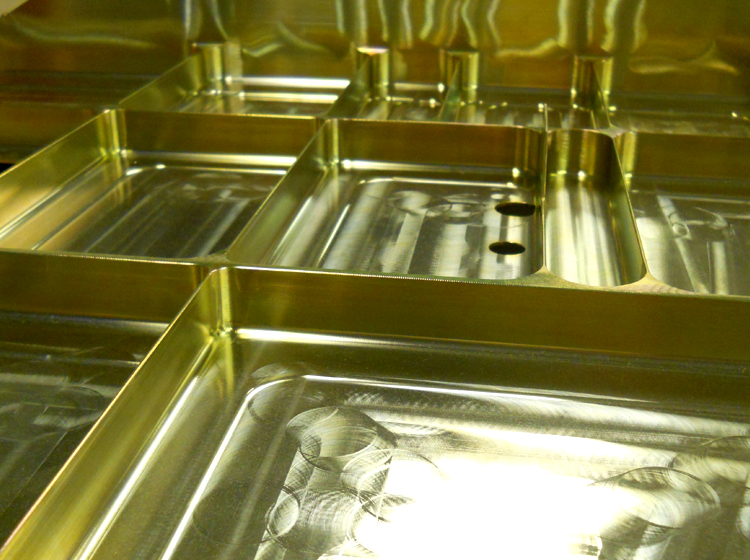
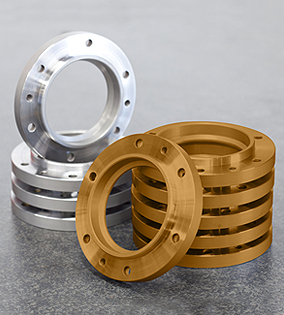
Chemical Films; Black
[MIL-F-495E] (no measurable thickness)
A uniform black corrosion retarding coating for copper & copper alloys. Coating has no abrasion resistance. Used to impart black color to and for gloss reduction purposes on copper alloy surfaces other than food service and water supply items. Also as a base for subsequent coatings such as lacquer, varnish, oil, and wax.
Applications include: Camera components; laser devices; jewelry; brass hardware; specialty tooling
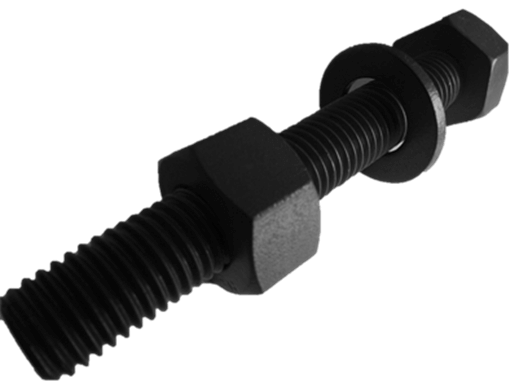
Chrome
[QQ-C-320B]
Chrome is about the most versatile plated metal in the industry. From the venerable ‘hard chrome’ to the famous ‘decorative chrome’, no other plated metal has served so many needs for so many industries for so long. It is virtually the nemesis of its metal rivals. When other metals are touted for one thing or another, invariably there will be a comparison to chrome. Chromium has excellent tarnish resistance, and the nickel undercoat in decorative chrome (class 1) provides a good foundation for the lustrous chromium finish. The nickel also provides corrosion protection for the underlying steel. Another feature of chromium plating is that it resists cleaning chemicals, handling and abrasive wear.
Excellent hardness (Rc 68-74), wear resistance and erosion resistance. Has low coefficient of friction, and is resistant to heat. In addition to above properties, can be rendered porous for lubrication purposes. All coated steel parts having a hardness of Rockwell C 36 and higher shall be baked after plating at minimum of 375 ± 25°F per the following schedule:
| Tensile Strength (Ksi) | Time (At Temperature Hours) |
|---|---|
| 160-180 | 3 |
| 181-220 | 8 |
| 221 and above | 12 |
All Class 2 plated parts designed for unlimited life under dynamic loads shall be shot peened per MIL-S-13165 or MIL-R-81841 prior to plating.
Class 1: Decorative Chrome; Corrosion protecting plating (.00001" minimum thickness on all visible surfaces).
Class 2: Hard Chrome engineering plating (.002 minimum thickness unless otherwise specified).
Class 2a: Plated to specified dimensions or processed to specified dimensions after plating.
Class 2b: Parts below Rc 40 and subject to static loads or designed for limited life under dynamic loads.
Class 2c: Parts below Rc 40 and designed for unlimited life under dynamic loads.
Class 2d: Parts have hardness of Rc 40 or above and subject to static loads or designed for limited life under dynamic loads.
Class 2e: Parts have hardness of Rc 40 or above and are designed for unlimited life under dynamic loads.
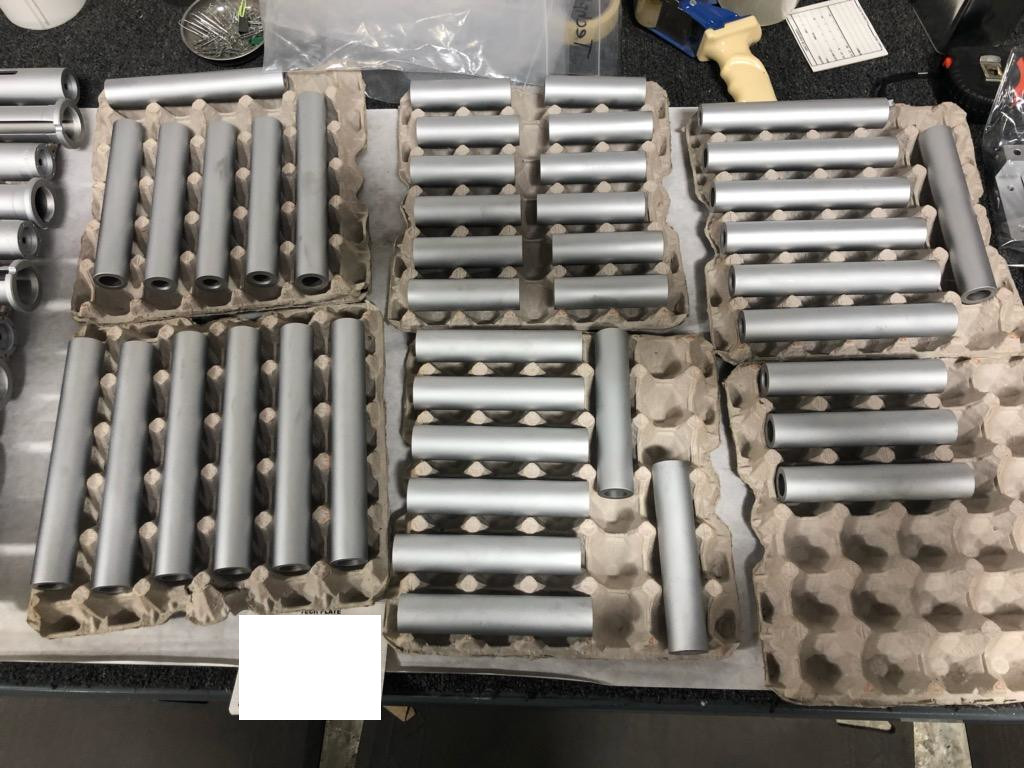
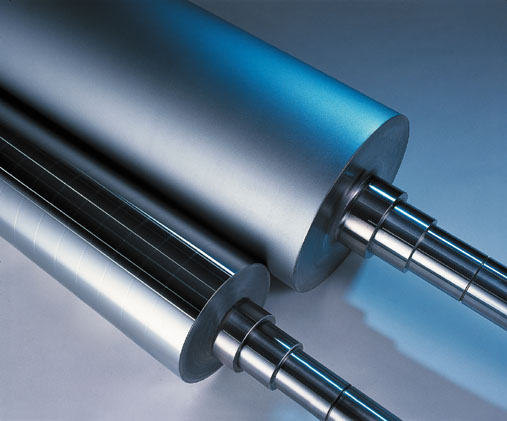
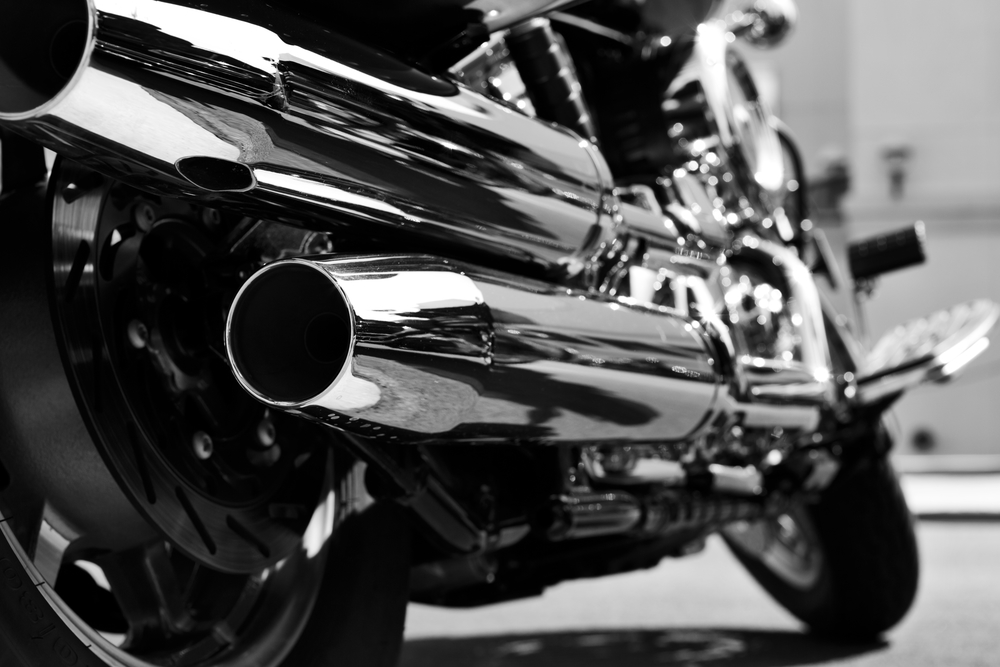
Copper
[MIL-C-14550B]
The plated metal is copper in color; and can be deposited matte to very bright . Copper has good corrosion resistance when used as an undercoat. A number of copper processes are available, each designed for a specific purpose;
Bright (to eliminate the need for buffing).
High speed (for electroforming).
Fine grain (to prevent casehardening).
All steel parts having a hardness of Rockwell C35 and higher shall be baked at 375°F±25F° for 24 hours within 4 hours after plating to provide hydrogen embrittlement relief. Plated springs and other parts subject to flexure should not be flexed prior to baking operations.
Class 0: (Unless otherwise specified .001-.005") For heat treatment stop-off.
Class 1: (.001" minimum thickness) For carburizing and decarburizing shield, also plated through printed circuit boards.
Class 2: (.0005" minimum thickness) As an undercoat for nickel and other plating.
Class 3: (.0002" minimum thickness) To prevent basis metal migration into tin (prevents poisoning of solderability).
Class 4: (.0001" minimum thickness).
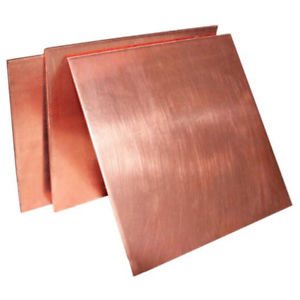
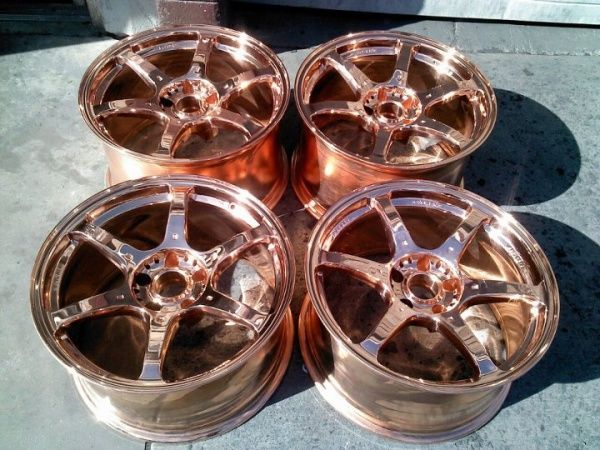
Electroless Nickel
[AMS-2404C, AMS-2405B, AMS-2433B]
Previously Mil-C-26074. Coatings typically used to provide a hard-ductile, wear-resistant and corrosion-resistant surface for operation in service temperatures up to 1000°F (538°C). Electroless nickel plating provides uniform build-up on complex shapes. Electroless nickel plating, also known as chemical or autocatalytic nickel plating. In contrast to the electroplating technique, electroless (chemical) nickel plating baths work without an external current source. The plating operation is based upon the catalytic reduction of nickel ions on the surface being plated.
There are 3 main types of electroless nickel coatings:
1. nickel-phosphorus
2. nickel-boron
3. poly alloys
Nickel-phosphorus is generally used for engineering applications. The most widely used electroless nickel is deposited by the catalytic reduction of nickel ions with sodium hypo- phosphite in acid baths at pH 4,5ñ5,0, and at a temperature of 85ñ95°C. The deposits contains typically 3 to 13% phosphorus by weight. The alloy obtained is dependent upon the chemical composition of the solution and the operating conditions. The phosphorus content significantly influences its chemical and physical properties in both the as-plated condition and after heat treatment.
A distinction is made between three variants:
1. Phosphorus content between 3 and 7%. These coatings have excellent high wear resistance. Excellent corrosion resistance in concentrated caustic soda.
2. Phosphorus content between 9 and 12%. Corrosion protection and abrasion resistance are good enough for most applications. The plating
bath works particularly economically.
3. Phosphorus content between 10 and 13%. The coatings are very ductile and corrosion resistant. They fulfil the highest demands for corrosion
resistance against chlorides and simultaneous mechanical stress.
Nickel-boron is very often used in industrial wear applications for its as-plated hardness which is higher than that of nickel-phosphorus. The boron content can be varied from 0.1 to 10%. The re- ducing agent used is dimethylamine boron or sodium borohydride depending on the desired alloy composition.
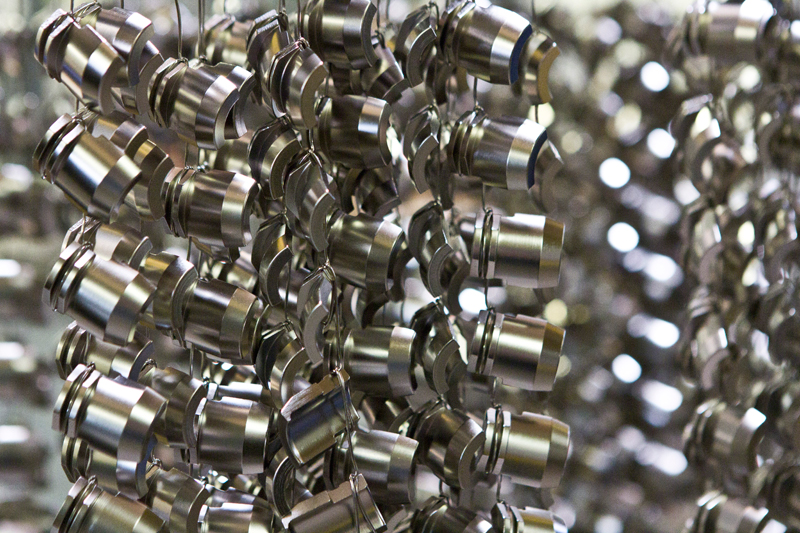
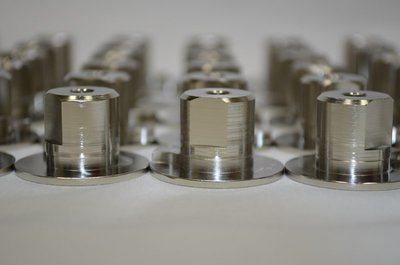

| Property | Low-Phosphorus | Mid-Phosphorus | High-Phosphorus |
|---|---|---|---|
| Composition | 3 to 4% P, balance Ni | 6 to 9% P, balance Ni | 11 to 12% P, balance Ni |
| Structure | Micro- crystalline | Mixed crystalline and amorphous | Amorphous |
| Internal Stress | -10 MPa | +40 MPa | -20 MPa |
| Final Melting Point | 1275º C | 1000º C | 880ºC |
| Density | 8.6 g/cm3 | 8.1 g/cm3 | 7.8 g/cm3 |
| Coefficient of Thermal Expansion | 12.4 m m/m-º C | 13 m m/m-º C | 12.0 m m/m-º C |
| Electrical Resistivity | 30 mW - cm | 75 mW -cm | 100 mW - cm |
| Thermal Conductivity | 0.6 Wcm-K | 0.05 W/cm-K | 0.08 W/cm-K |
| Specific Heat | 1,000 J/kg-K | ND | 460 J/kg-K |
| Magnetic Coercivity | 10,000 A/m | 110 A/m | 0 |
| Tensile Strength | 300 MPa | 900 MPa | 800 MPa |
| Ductility | 0.70% | 0.70% | 1.50% |
| Modulus of Elasticity | 130 GPa | 100-120 GPa | 170 GPa |
| Hardness, as deposited | 700 HV100 | 600 HV100 | 530 HV100 |
| Coefficient of Friction | 960 HV100 | 1000 HV100 | 1050 HV100 |
| Taber Wear Index, as deposited | ND | 0.38 | 0.45 |
| Hardness, heat treated | 11 mg/1,000 cycles | 16 mg/1,000 cycles | 19 mg/1,000 cycles |
| Taber Wear Index, heat treated | 9 mg/1,000 cycles | 12 mg/1,000 cycles | 12 mg/1,000 cycles |
| Corrosion Protection, salt fog resistance | 24 hours | 96 hours | 1,000 hours |
Electropolish
(No mil spec)
The electropolish process is the removal of substrate (base) material in such a fashion as to impart a highly reflective surface in most cases; diminishing scratches, burrs and unwanted sharp edges from most metals. Electropolishing is most frequently used on stainless steel, relatively high in both nickel and chromium content (300 and 400 series). Finishes from satin to mirror bright are produced by controlling time, temperature, current, bath make-up or singularly or in combinations. Surface appearance results are also dependent on pre-process condition. Typical material removal .0002" per surface, unless otherwise specified. Processing of close tolerance surfaces requires a significant amount of vigilance from the plater: there is no undoing the results. As an adjunct, the electropolish process creates a super-passivated surface of the base metal, maximizing the corrosion resistant properties of the particular alloy.
Applications:
Medical components; food processing machinery; pharmaceutical filling devices; complex stainless details; computer peripheral parts; aerospace technologies. More extensive reading.
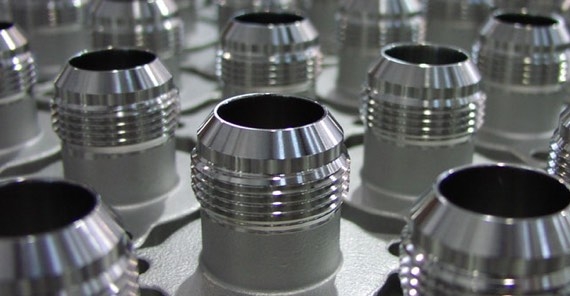
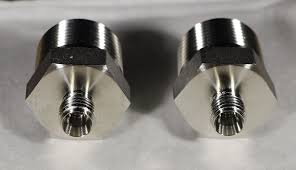
Gold
[MIL-G-45204C]
Gold is by far the most popular elemental metal; and gold plating follows suite. Functional, practical, effective. Superior corrosion resistance, spectacular aesthetics. Yellow to orange color depending on proprietary process used. Ranges from matte to bright finish depending on basis material and type, grade and class of gold used. Brightness of under plating will also affect appearance. Excellent corrosion resistance, and has high tarnish resistance. Provides low contact resistance, and is an excellent conductor. Gold has excellent solderability. If the hardness grade for the gold coating is not specified, Type I shall be furnished at hardness Grade A, and Type II shall be furnished at hardness Grade C. For soldering, a thin, high purity soft gold coating is preferred. A minimum thickness of .000050 inch and a maximum thickness of .00010 inch shall be plated.
Type I: 99.7% gold minimum (Grades A, B, or C)
Type II: 99.0% gold minimum (Grades B, C, or D)
Type III: 99.9% gold minimum (Grade A only).
Grade A: 90 Knoop maximum
Grade B: 91-129 Knoop
Grade C: 130-200 Knoop
Grade D: 201 Knoop and over
Class 00: .00002" minimum thickness
Class 0: .00003" minimum thickness
Class 1: .00005" minimum thickness
Class 2: .00010" minimum thickness
Class 3: .00020" minimum thickness
Class 4: .00030" minimum thickness
Class 5: .00050" minimum thickness
Class 6: .00150" minimum thickness
Applications:
Electronic connectors; jewelry; plastics tooling; firearms; flatware; transducer cells; shielding; automotive decorative hardware.

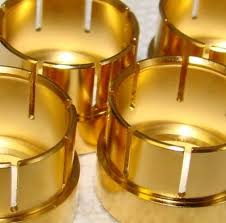
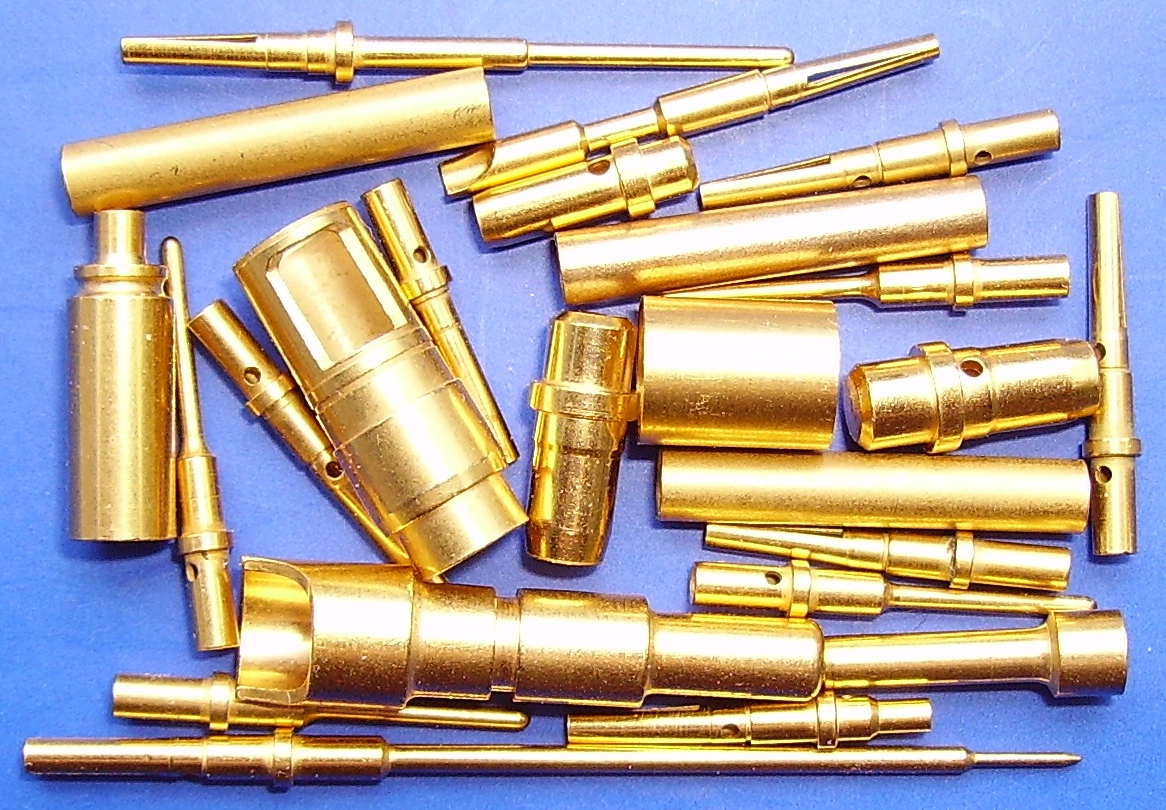
Hard Anodize
[MIL-A-8625F] Type III, Class 1 & 2
Hard anodizing is a term used to describe anodic coatings with surface hardness and/or abrasion resistance as their primary characteristic. These anodic coatings are usually thick, greater than .001" (50%-buildup & 50%-penetration), by normal anodizing standards, and they are produced using special anodizing conditions. Thick coatings (over .004") will tend to break down sharp edges. Alloys with a very high copper or silicon content are less suitable for this process. The color of the natural anodic coating depends on the alloy and the coating thickness. e.g. 6061 has a tan or gray color which darkens to almost black at .003"; 6063 has an amber shade which darkens to bronze. Both are considered clear.
After hard anodizing surfaces may be sealed in boiling distilled water, sodium dichromate solution, dewatering oil, wax or PTFE solutions.
Dichromate sealing improves the fatigue properties, but decreases the abrasion resistance to some extent (in common with other aqueous sealing solutions). For this reason, aqueous sealing processes are not normally used where high wear resistance is required. Hard anodized coatings may be impregnated with oils, silicones or dry lubricants for improvement of anti-friction properties during this seal procedure. Corrosion resistance could be improved by PTFE impregnation. For the best resistance to wear and abrasion it is preferable to use pure aluminum or alloys with the lower values of alloying additions. Hard anodized aluminum shows a good heat resistance, and the coatings give also very good electrical insulation. This property can be further improved by hot water sealing and waxing.
Abrasion resistance for unsealed coatings are tested by method 6192 of FED-STD-141 using CS-17 wheels with 1000 gm load. "The anodic coating shall have a maximum wear index of 3.5 mg/1000 cycles on aluminum alloys having a copper content of 2 percent or higher. The wear index for all alloys shall not exceed 1.5 mg/1000 cycles".
Hard anodic oxide coatings find application in the engineering industry for components which require a very wear resistant surface."Flash" hard anodize may be used instead of conventional anodize for corrosion resistance
Type III: Thickness as specified on drawing. If not specified nominal thickness shall be 0.002" ± .0002
Class 1: Not dyed or pigmented
Class 2: Dyed. (Specify color on contract)
Typical Applications:
Hydraulic cylinders, wear surfaces, actuating cams, pistons, cylinders, and hydraulic gear. Other applications include the coating for the production of flame and chemically resistant surfaces.
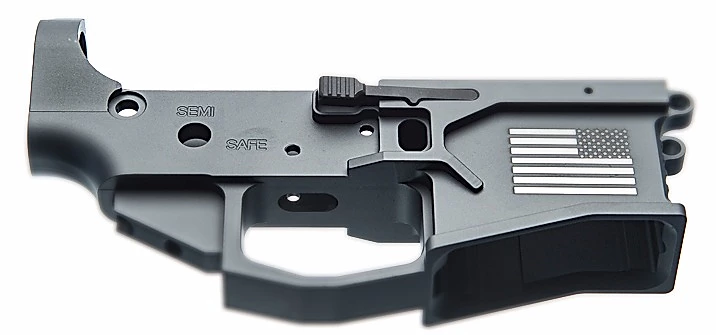
Lubricant, Solid Film
[MIL-L-46010D]
A solid film lubricant renders a surface permanently lubricated, giving rise to the elimination of wet lubes. The applications vary as do the coatings. From MoS (molybdenum disulphide) to PTFE (polytetrafluoroethylene) otherwise known as Teflon, compunds are blended to meet specific needs. Low VOC coatings are available in both organic and inorganic solid film lubricants as well as corrosion inhibitive coatings. This mil spec establishes the requirements for three types of heat cured solid film lubricant that are intended to reduce wear and prevent galling, corrosion and seizure of metals. Compliance: all items must meet Sections 3 and 5 of the spec. For use on aluminum, copper, steel, stainless steel, titanium, and chromium and nickel bearing surfaces. Thickness range: .0003" - .0005"mm. No single reading less than .0002" or greater than .0007".
Type I: A cure temperature of 300°F ± 60F° and endurance life of 250 minutes.
Type II: A cure temperature of 400°F ± 60F° and endurance life of 450 minutes.
Type III: A low volatile organic compound (VOC) content lubricant with cure cycles of 300°F ± 60F° for one hour an endurance life of 450 minutes.
Color 1:Natural product color.
Color 2:Black color.
Applications:
Ammo loading machines; Sealed linkages; Vibratory assembly equipment; Cams; Journals; Firearms components; Mold release; Chemical process equipment; Pumps and compressors;
Industrial bakeware; Glass coatings .
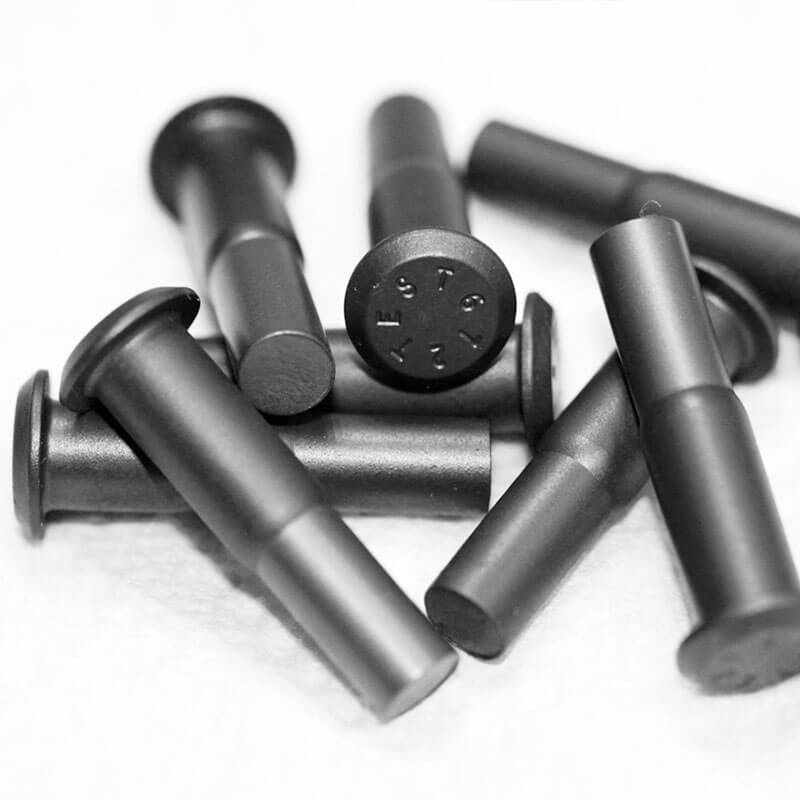
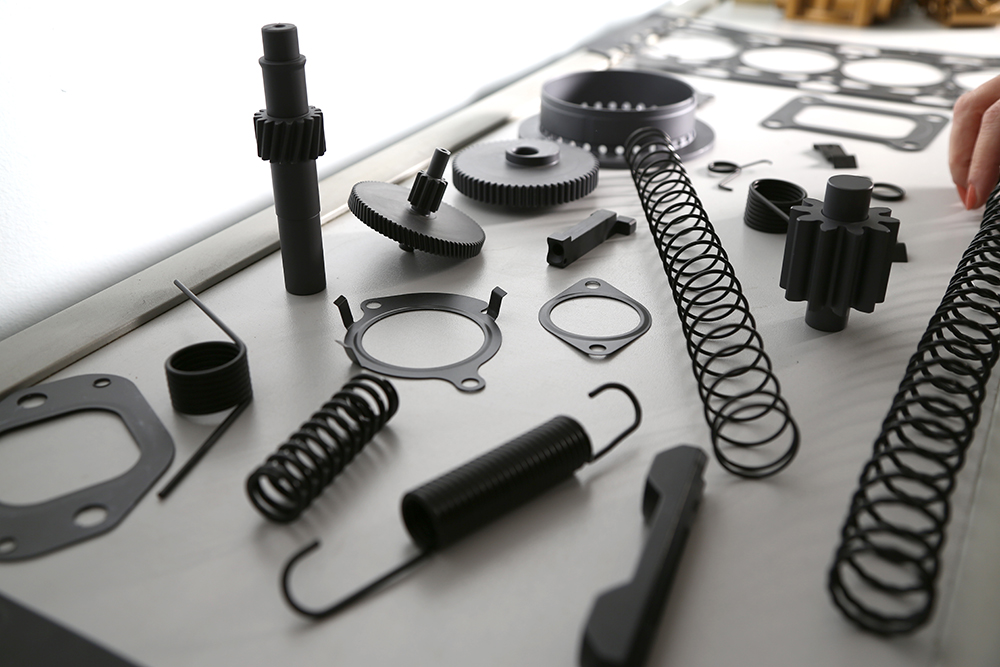
Magnesium Chromic Treatment
SAE-AMS-M-3171 (supersedes Mil-M-3171)
Type I (Dow 1): A chrome pickle treatment for magnesium. Color varies from matte gray to yellow-red. Only fair corrosion resistance (less than 24 hours 20% salt spray resistance). Removes metal (Approximately .0006" for wrought material, less for castings). No dimensional change. Used mainly for protecting magnesium during shipment, storage, and machining. Can be used as a paint base. Note: Must remove Type I coating before applying Type III and Type IV treatments. Good paint base and protective qualities for all magnesium alloys except EK30A, EK41A, EZ33A, HK31A and M1A
Type III (Dow 7): A dichromate treatment for magnesium. Color varies from light brown to dark brown to gray depending on alloy. Only fair corrosion resistance (less than 24 hours 20% salt spray resistance).Precleaning and pickling may result in dimensional changes due to metal loss.
Type IV (Dow 9): A galvanic anodize treatment for magnesium. Produces a dark brown to black coating. Designed to give a protective film on alloys which do not react to Dow No. 7 treatment. Only fair corrosion resistance (less than 24 hours 20% salt spray resistance). Makes no dimensional change. Can be used as a paint base, and is suitable to all magnesium alloys. Used where optical properties (black/non-reflective) are required on close tolerance parts (camera parts, laser components, telescopes, etc.) Note: Precleaning and pickling may result in dimensional changes due to basis material loss.
Type VI (Dow 19): Chromic Acid brush-on treatment. Touch up of abraded, damaged, or reworked areas previously coated with a chemical treatment such as Dow #7, or anodize is acceptable. Approval for reworking should be made on a part by part basis by the quality control department, and should be included in the processing specifications for each part number or family of part numbers. For instance, threads which have been reworked can often be repaired with a suitable cleaning and brush application of chromating solution. Type VII: Fluoride Anodizing
Type VIII: Chromate Treatment conversion coating
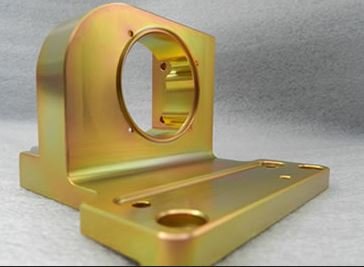
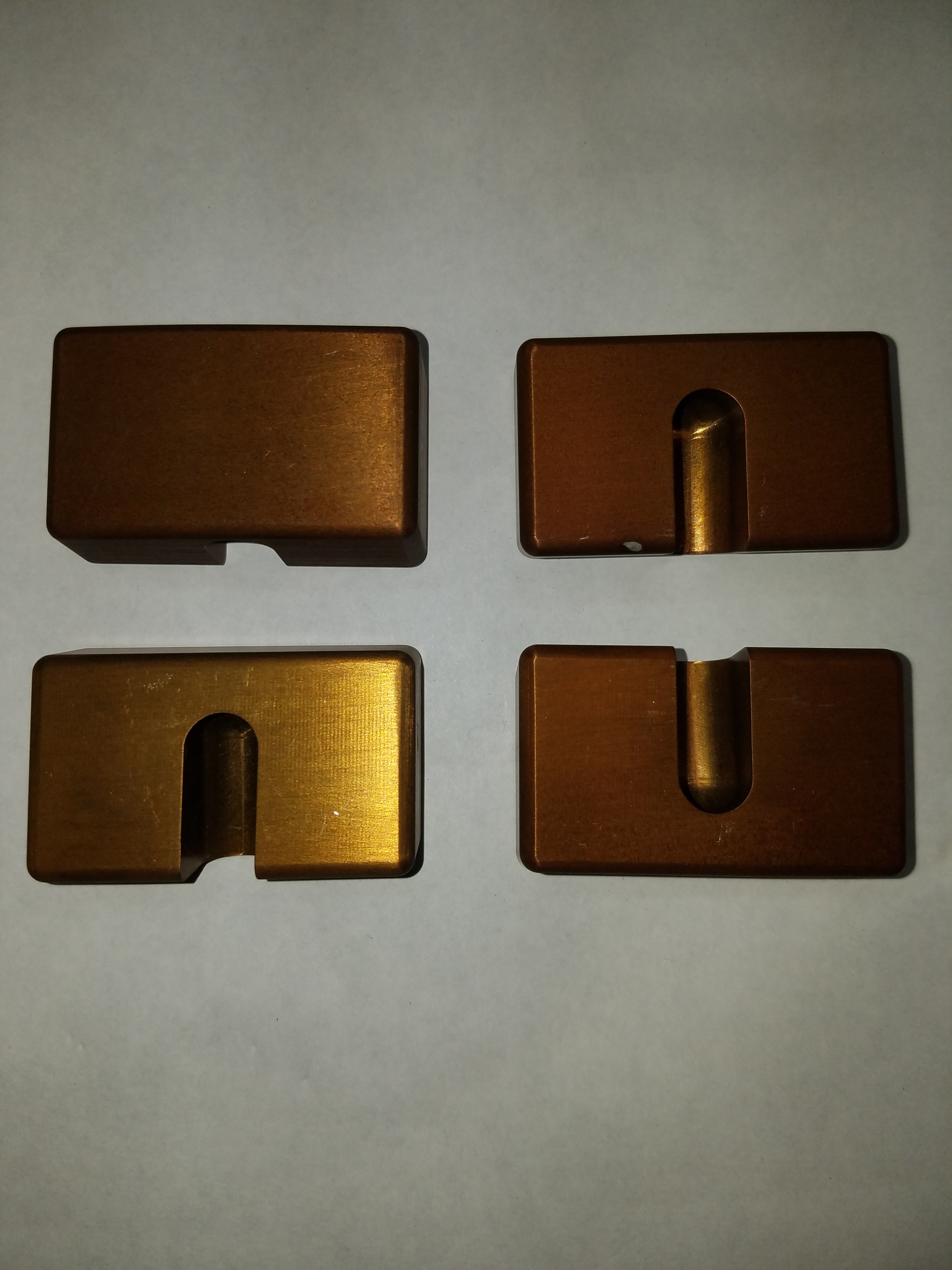
Magnesium Anodic Treatment
MIL-M-45202
Magnesium is usually treated with an anodic or a chromic coating prior to the application of an organic finish. Coatings range from thin clear to light gray-green, to thick dark green coatings. The clear coatings are used a base for subsequent clear lacquers or paints to produce a final appearance similar to clear anodizing on aluminum.
The light gray-green coatings are used in most applications which are to be painted. The thick, dark green coating offers best combination of abrasion resistance, protective value and paint base characteristics.
The HAE anodic finish is probably the hardest coating available for magnesium. They exhibit stability at high temperatures and good dielectric strength. Excellent paint base. Requires resin seal or paint for maximum corrosion protection.
Type I: Light coating.
Class A: (.0002" ) Tan coating (HAE)
Grade 1: Without post treatment (dyed)
Grade 2: (.0003") With bifluoride-dichromate post treatment
Class C: Light green coating (Dow #17)
Type II: Heavy coating.
Class A: (.0015") Hard brown coating (HAE)
Grade 1: Without post treatment
Grade 3: With bifluoride-dichromate post treatment
Grade 4: With bifluoride-dichromate post treatment including moistheat aging.
Grade 5: With double application of bifluoride-dichromate post treatment including moist heat aging.
Class D: (.0012") Dark green coating (Dow #17)
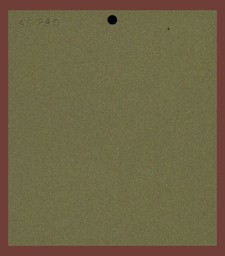
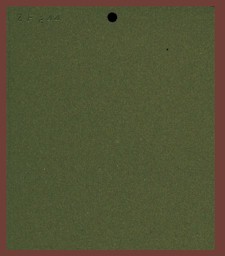
Nickel
[QQ-N-290A]
There is a nickel finish for almost any requirement. Nickel can be deposited soft or hard, dull to bright. The difference is dependent on process used and conditions employed in plating. The hardness can range from 150 - 500 Vickers. Can range in appearance from matte, light gray (almost white) to a condition resembling stainless steel. Corrosion resistance is a function of thickness. Has a low coefficient of thermal expansion. Nickel plating is magnetic. All steel parts having a hardness of Rc 40 or greater require a post bake at 375°F ± 25 for 3 hours minimum. Note: All steel parts having a tensile strength of 220,000 or greater shall not be nickel plated without specific approval of procuring agency.
Class 1: For corrosion protection. Plating shall be applied over an underplating of copper or yellow brass on zinc and zinc based alloys.
In no case shall the copper underplate be substituted for any part of the specified nickel
Class 2: For engineering applications.
Grade A : .0016" minimum thickness
Grade B: .0012" minimum thickness
Grade C: .0010" minimum thickness
Grade D: .0008" minimum thickness
Grade E: .0006" minimum thickness
Grade F: .0004" minimum thickness
Grade G: .0002" minimum thickness
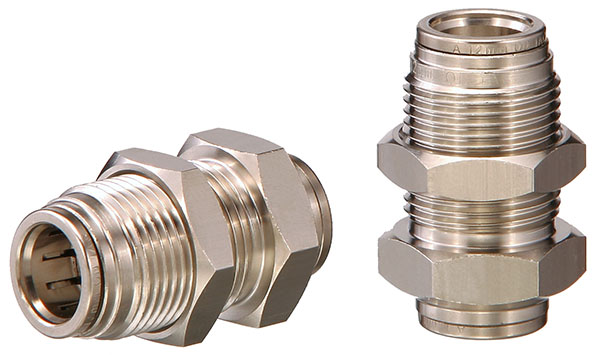

Palladium
[MIL-P-45209B] [ASTM B 679]
Palladium plating provides an alternative to gold plating on connectors and circuit boards. The deposits exhibitit lower porosity, better ductility, and superior resistance to corrosion than hard gold. When plated with a flash of soft gold, it also demonstrates good solderability. Has a gray to bright deposit depending on the process used.
Minimum thickness shall be .000050" unless otherwise specified. A gray, dense deposit, good for undercoats. Good wear characteristics, corrosion resistance and catalytic properties. Good conductivity. Steel springs and other steel parts subject to flexure or repeated impact and of hardness greater than Rc 40 shall be baked at 375° F ± 25° for 3 hours minimum after plating.
Precious metals commonly used in electroplating and surface finishing operations include gold, silver, indium, ruthenium, palladium and rhodium. Factors that influence the selection of precious metals are their contact characteristics, corrosion resistance, heat resistance, reflectivity, solderability, color and wear resistance.
Palladium is an excellent hard "white gray" finish that is increasingly being utilized as a replacement for nickel undercoatings in the jewelry and watch industry. Often mistaken for "white gold", palladium finishes are characterized by high tarnish resistance and can be used as an alternative to rhodium when costs are a prime consideration.

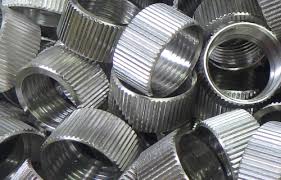
Passivate
[QQ-P-35C] [ASTM A967]
Intended to improve the corrosion resistance of parts made from austentic, ferritic and martensitic corrosion-resistant steels of the 200, 300 and 400 series and precipitation hardened corrosion-resistant steels. 440C grades may be exempt from passivation treatments at the discretion of the procuring activity. The types of passivating is alloy specific.
Minimum thickness shall be .000050" unless otherwise specified. A gray, dense deposit, good for undercoats. Good wear characteristics, corrosion resistance and catalytic properties. Good conductivity. Steel springs and other steel parts subject to flexure or repeated impact and of hardness greater than Rc 40 shall be baked at 375° F ± 25° for 3 hours minimum after plating.
Type II: Medium temperature nitric acid solution with sodium dichromate additive
Type VI:Low temperature nitric acid solution.
Type VII: Medium temperature nitric acid solution.
Type VIII: Medium temperature high concentration nitric acid solution.
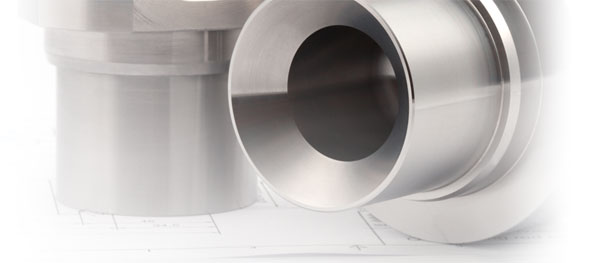
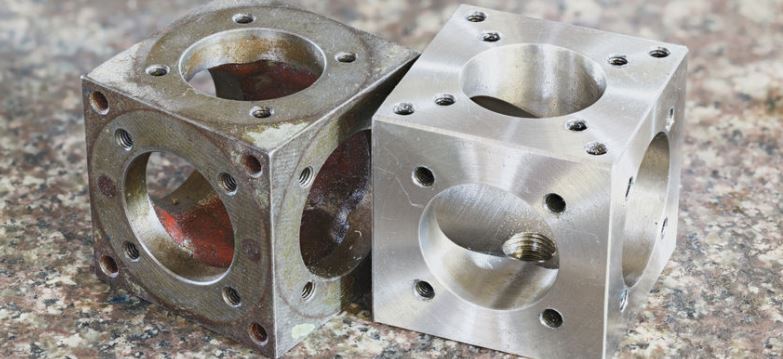
Phosphate Coating; Light
[TT-C-490D]
Specification covers cleaning methods and pre-treatment processes.
Type I: Intended as a general all-purpose pretreatment prior to painting.
Type VI:Intended primarily for use where metal parts are to be formed after painting.
Type VII: Intended for use where size and shape preclude using type I, II or IV and where items containing mixed metal components are assembled prior to treatment.
Note: Cleaning material shall not contain any chemical which is classified in the Clean Air Act Amendments of 1990 as a Class I or Class II ozone depleting substance.
Light coating for use as a paint base.
Cleaning methods:
Method I:Mechanical or abrasive cleaning (for ferrous surfaces only).
Method II: Solvent cleaning.
Method III: Hot Alkaline (for ferrous surfaces only).
Method IV:Emulsion.
Method V: Alkaline derusting (for ferrous surfaces only).
Method VI: Phosphoric acid.
Type I: Zinc phosphate.
Class 1 - spray application (150mg/sq. ft. min. - 500mg/sq. ft. max).
Class 2A - Immersion or Dip application (300mg/sq. ft. min/500mg/sq. ft. max).
Class 2B - Immersion or Dip application (600mg/sq. ft. min to 1000mg/sq. ft. max.).
Type II: Aqueous Iron Phosphate (35mg/sq. ft. min.)
Type III: (.0003-.0005") Organic pretreatment coating (unless otherwise specified, MIL-C-8514 of DOD-P-15328).
Type IV:Non-aqueous iron phosphate. (35mg/sq. ft. min.)
Type V: Zinc phosphate (500mg/sq. ft. min. - 1100mg/sq. ft. max.).
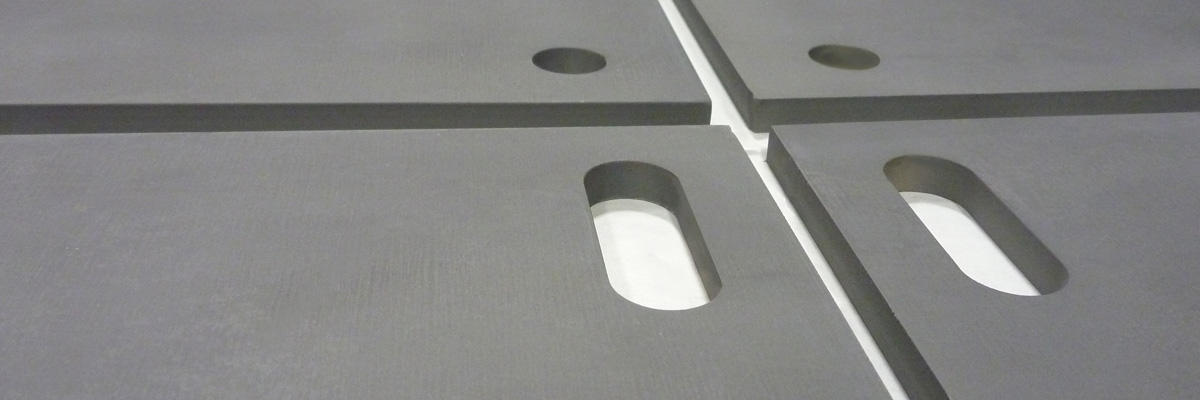

Phosphate Coating; Heavy
[DOD-P-16232-F]
A coating for medium and low alloy steels. Gray to black in color. Intended uses: The "heavy" phosphate coatings covered by this specification are intended as a base for holding/retaining supplemental coatings which provide the major portion of the corrosion resistance.
"Light" phosphate coatings used for a paint base are covered by other specifications such as TT-C-490. Heavy zinc phosphate coatings may be used when paint and supplemental oil coatings are required on various parts or assemblies. Heavy coating (.0002-.0004" thickness) is for corrosion and wear resistance.
Type M: Manganese phosphate base coating (min. 16g/m² or 11g/m when specified).
Class 1: Supplementary preservative treatment or coating, as specified.
Class 2: Supplementary treatment with lubricating oil conforming to MIL-L-3150.
Class 3: No supplementary treatment.
Class 4: Chemically converted (may be dyed to color as specified). With no supplementary coating or supplementary coating as specified.
Type Z: Zinc phosphate base coating, (min 11g/m).
Class 1: Supplementary preservative treatment or coating as specified.
Class 2: Supplementary treatment with preservative conforming to
MIL-C-16173. Grade 3 or MIL-L-3150 as alternative for very small parts
Class 3: No supplementary treatment
Class 4: Same as class above.


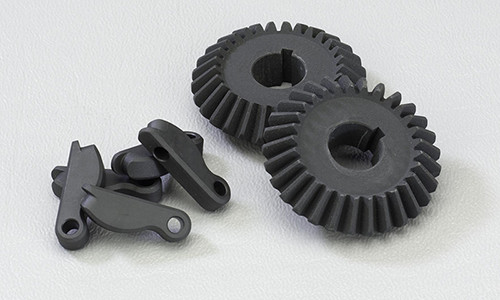
Powder Coating
[MIL-DTL-53039]
Powder coating is a system that applies, to a substrate, finely ground charged particles of pigments & resins. This powder is heated to above its melting point causing the powder to flow & fuse, creating a continuous film. The result is a uniform, durable, high-quality, and attractive finish. Powder Coating is also [used] as a general term and usually non-specific, to extol the virtues of a durable painted finish on metal surfaces. Below are some powder coating specifics.
Epoxy Powder Coatings
Typical applications include pipe coatings, electric meters, metal furniture, shelving, electrical parts, refrigerator liners, dryer drums, and high voltage switchgear
Hybrid Powder Coatings
Typical applications are shelving, hot water heaters, office furniture, power tools, tool boxes, electrical boxes, fire extinguishers, under-hood automotive and oil filters.
Polyurethane Powder Coating
Typical applications utilizing polyurethane coatings include fluorescent light fixtures, lawn and garden equipment, electrical enclosures, playground equipment, range panels, air conditioners, automotive trim, and patio furniture.
TGIC Powder Coatings
(Triglycidylisocyanurate)
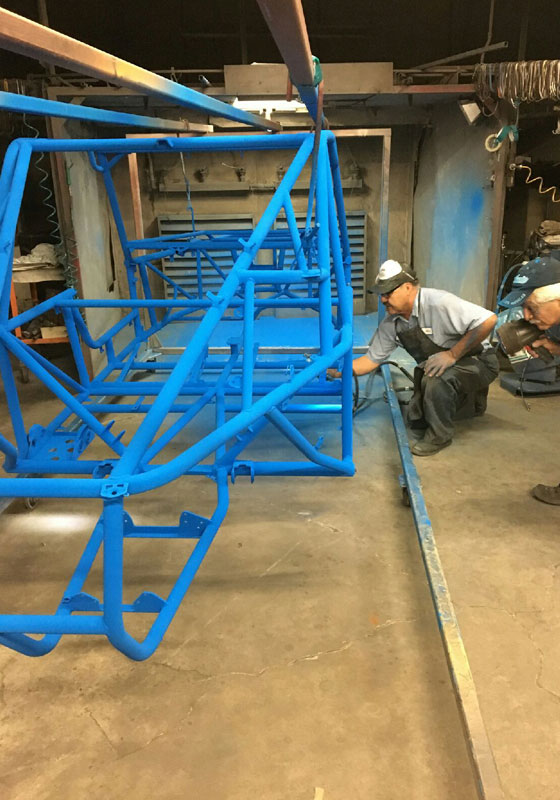
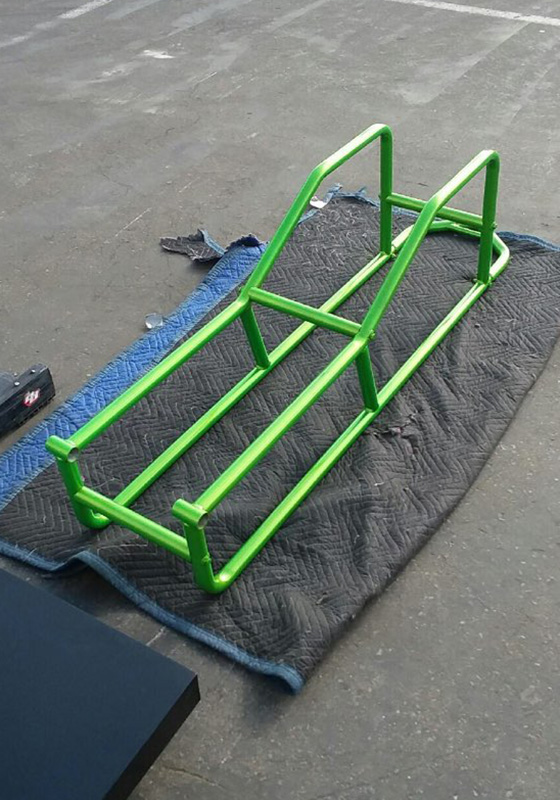
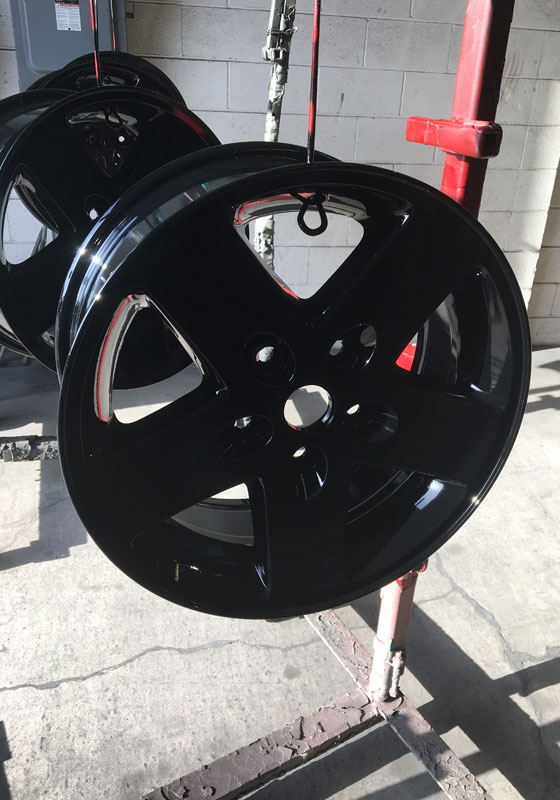
Rhodium
[MIL-R-46085B]
Metallic and similar to stainless steel in color. Excellent corrosion resistance. Almost as hard as chromium. Very good abrasion resistance. Thicker coatings are very brittle. Has high reflectivity. Parts having hardness of Rc 33 or above shall be baked at 375°F for 3 hours prior to cleaning. Parts having hardness of Rc 40 and above shall be baked within 4 hours after plating at 375°F for 3 hours.
Type I: Over nickel, silver, gold, or platinum.
Type II: Over other metals, requires nickel undercoat.
Class 1: .000002" minimum thickness. Used on silver for tarnish resistance.
Class 2: .00001" minimum thickness.
Class 3: .00002" minimum thickness. Applications range from electronics to nose cones or wherever wear, corrosion resistance, solderability and reflectivity are important.
Class 4: .00010" minimum thickness.
Class 5: .00025" minimum thickness.
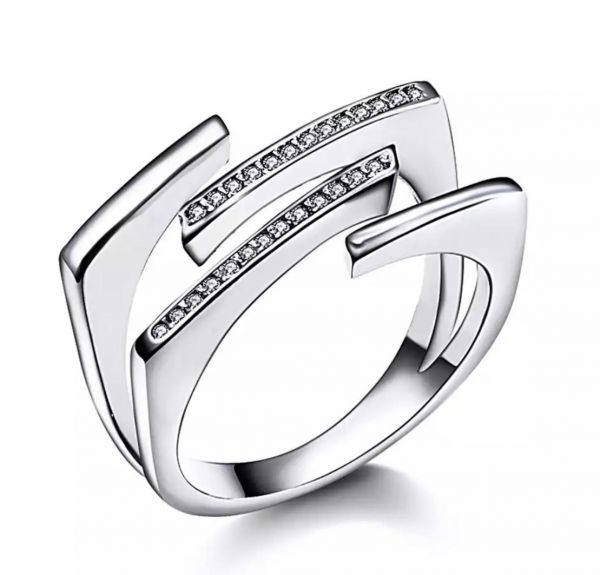
Salt Bath Nitriding
[SAE AMS 2755]
Salt Bath Nitriding (SBN) in a molten salt bath employs the temperature
range of 510C to 580C. The case hardening medium is a
molten, nitrogen-bearing, fused-salt bath SBN is a sub-critical
casehardening process; thus, dimensional stability can be maintained.
SBN adds more nitrogen and less carbon to ferrous
materials. Case depth is in the order of .0006" to .0008" Thick
with up to .0002" thick representing surface build-up.
SBN at TechPlate has several proprietary modifications and is applied
to a wide variety of carbon, low-alloy steels, tool steels, stainless
steels, and cast irons.
SBN Applications
Primarily used to improve wear resistance of surfaces and to increase
the endurance limit in fatigue. For many steels, resistance to
corrosion is improved. This process is not a deep case or hardened
cores. Categories: tooling; firearms; gears & cams; plastics
injection molds; cutting tools.
SBN is the chemical diffusion on metallurgical structures primarily
through absorption and reaction of nitrogen rather than through the
minor amount of carbon assimilation. Some processes are represented by
a number of commercial trade names, a typical commercial bath for salt
bath nitriding is composed of a mixture of sodium and potassium salts.
At TechPlate Cyanide-free SBN compositions have also been introduced.
However, in the active bath, a small amount of cyanide, generally up to
5.0%, is produced as part of the reaction. This is a relatively low
concentration, and these compositions have gained widespread acceptance
because they minimize substantially to the source of pollution.
Effects of Steel Composition.
Although the properties of alloy steels are improved by the compound
and diffusion layers, relatively greater improvement is achieved with
plain carbon steels of low and medium carbon content. For example, the
improvement in fatigue strength of unnotched test bars of 1015 steel
nitrided by this process for 90 min at 565̊C and water quenched (to
further enhance fatigue properties) is roughly 100%. Improvement
obtained with similarly treated test bars made of 1060 steel is about
45 to 50%.
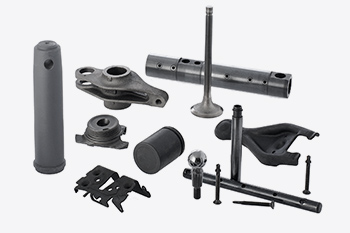
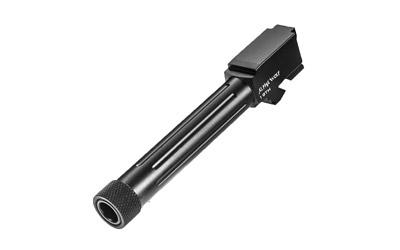
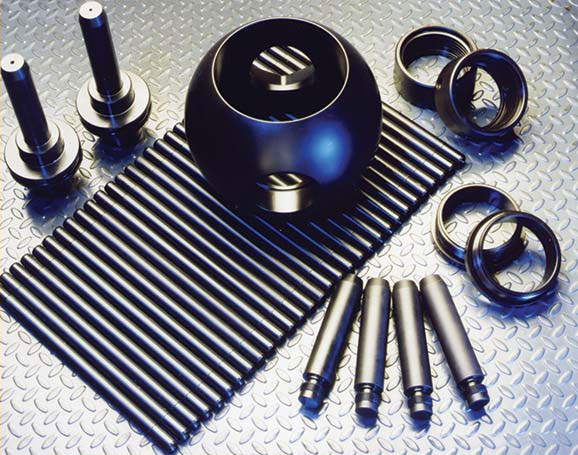
Silver
[QQ-S-365D]
.0005" minimum thickness unless otherwise specified. White matte to very bright in appearance. Good corrosion resistance, depending on base metal. Will tarnish easily. Hardness varies from about 90 Brinnell to about 135 Brinnell depending on process and plating conditions. Solderability is excellent, but deteriorates with age. Excellent electrical conductor. Has excellent lubricity and smear characteristics for anti-galling uses on static seals, bushing, etc. Stress relieve steel parts at a minimum 375°F ±25°F or more prior to cleaning and plating if they contain or are suspected of having damaging residual tensile stresses. Embrittlement relieve all steel parts Rc 40 and above at 375°F ±25°F for 3 hours within 4 hours of plating. Increasing use in both decorative and engineering fields, including electrical and electronic fields.
Type I:
Matte.
Type II: Semi-bright.
Type III: Bright.
Grade A:
Chromate post-treatment
to improve tarnish resistance.
Grade B: No supplementary treatment.
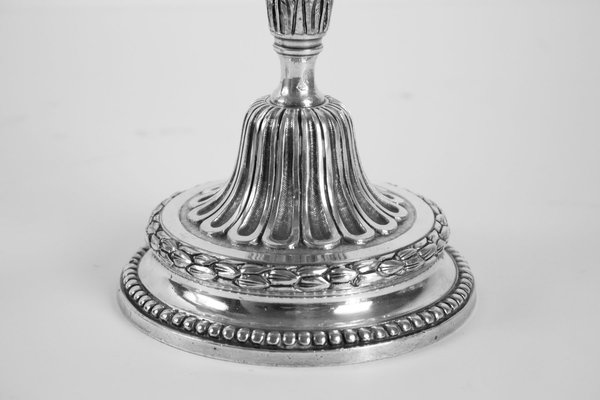
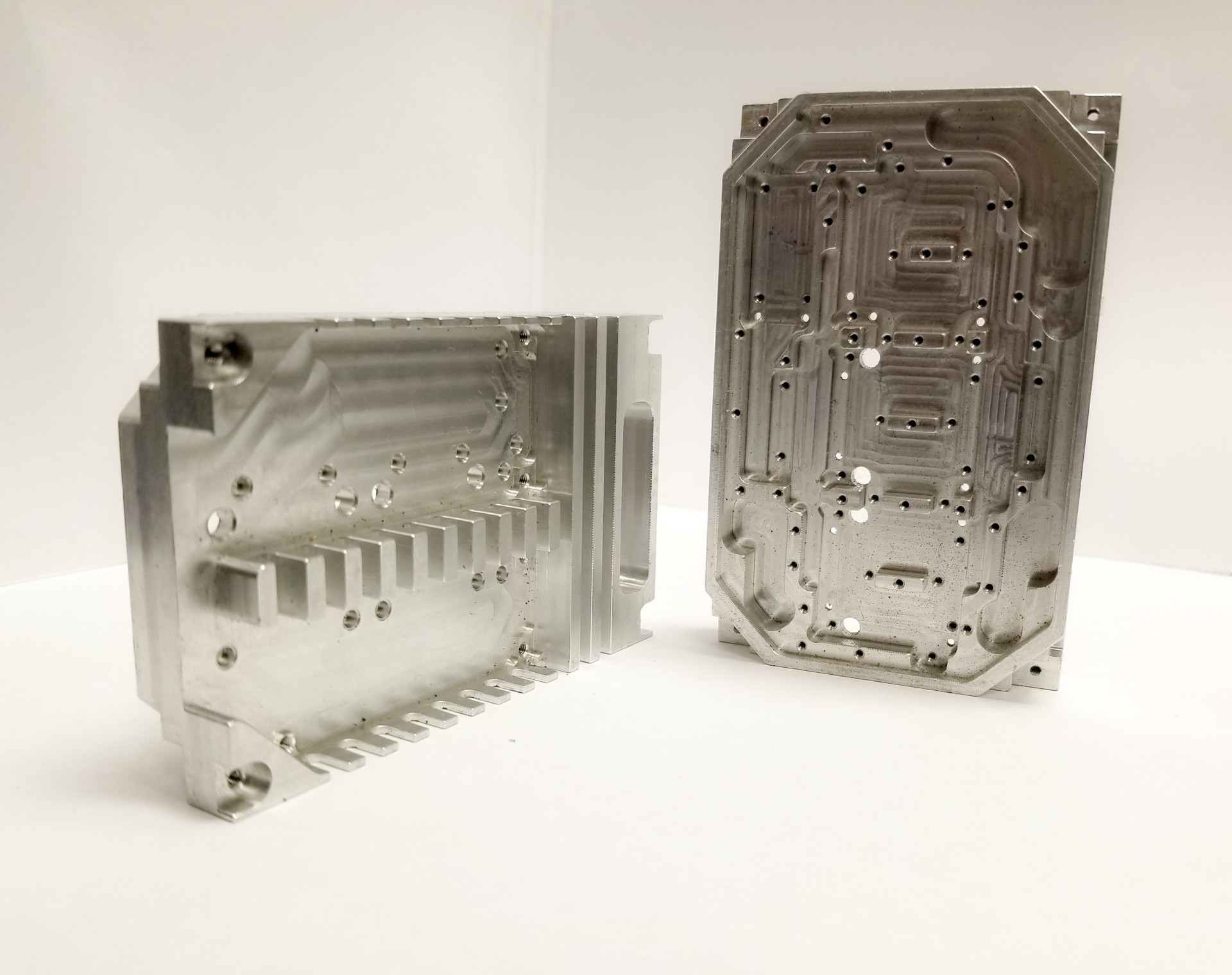
Teflon Coatings
[No Mil Spec]
- Teflon® PTFE (polytetrafluoroethylene) nonstick coatings are two-coat (primer/topcoat) systems. These products have the highest operating temperature of any fluoropolymer (260°C/500°F), an extremely low coefficient of friction, good abrasion resistance, and good chemical resistance. PTFE is available only in water-based liquid form.
- Teflon® FEP (fluorinated ethylene propylene copolymer) nonstick coatings melt and flow during baking to provide nonporous films. These coatings provide excellent chemical resistance. In addition to low friction, FEP coatings have excellent nonstick properties. Maximum use temperature is 204°C/400°F. FEP is available in water-based liquid and powder forms.
- Teflon® PFA: Like FEP, PFA (perfluoroalkoxy) nonstick coatings melt and flow during baking to provide nonporous films. PFA offers the additional benefits of higher continuous use temperature (260°C/500°F), film thicknesses up to 1,000 micrometers (40 mils), and greater toughness than PTFE or FEP. This combination of properties makes PFA an excellent choice for a wide variety of uses, especially those involving chemical resistance. PFA is available in both water-based liquid and powder forms.
- Teflon® ETFE is a copolymer of ethylene and tetrafluoroethylene and is also sold under the Tefzel® trademark. Although not fully fluorinated, ETFE has excellent chemical resistance and can operate continuously at 149°C/300°F. This resin is the toughest of the fluoropolymers and can be applied at film builds up to 1,000 micrometers (40 mils) to provide a highly durable finish. ETFE is available in powder form.
- Teflon®-S One Coat: These solvent-based liquid coatings are formulated with special blends of fluoropolymers and other high-performance resins to improve toughness and abrasion resistance. Because the film components stratify during baking, most of the fluoropolymer properties (such as low friction and nonstick character) are retained. The resins provide adhesion and abrasion resistance. These products can sometimes be applied to smooth, clean metal. Bake requirements vary, depending on the specific coating, from 163°C/325°F to 316°C/600°F.
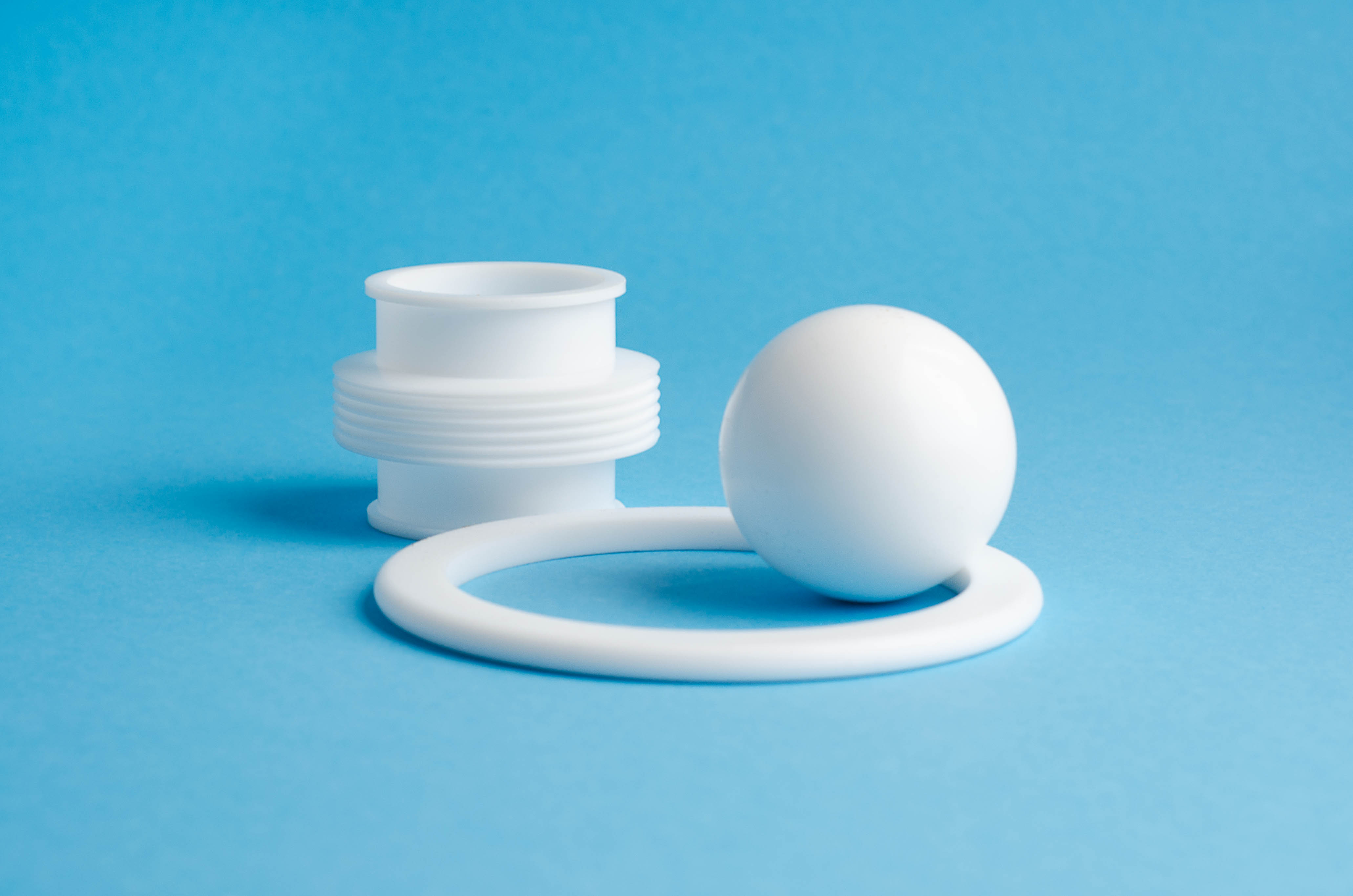
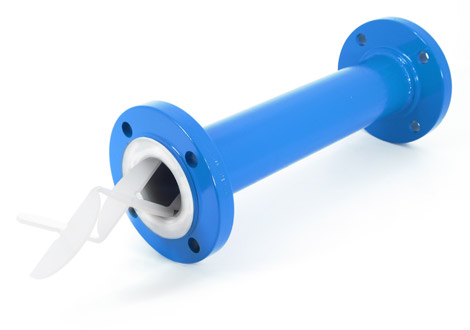
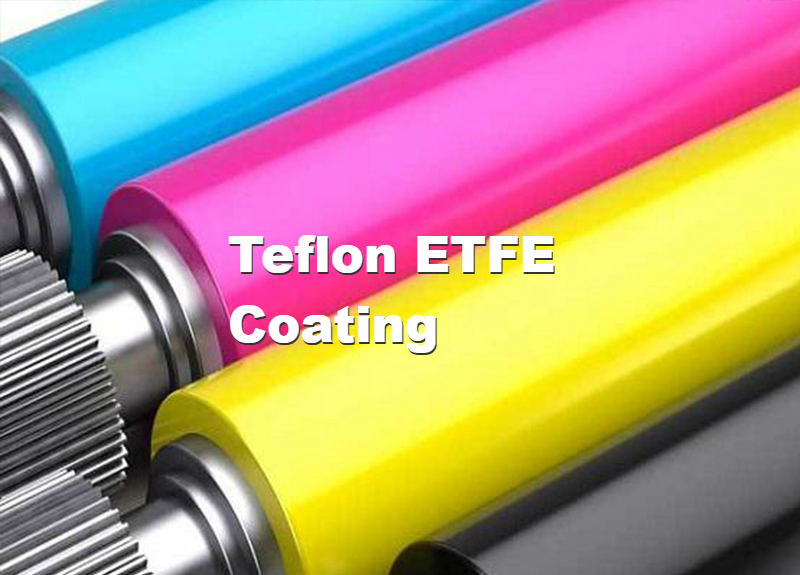
Tin
[MIL-T-10727C]
About Corrosion Protection: Some corrosion may be expected from tin coatings exposed outdoors. In normal indoor exposure, tin is protective on iron, steel, copper, and copper alloys.
Specification: MIL-T-10727 Tin Plating: Electrodeposited or Hot-Dipped
- Type I Electrodeposited. Reference ASTM B-545 Standard Specification for Electro-deposited Coatings of Tin
- Type II Hot-Dipped
About Composition: Tin should be not less than 99.5% except where deliberately alloyed for special purposes. The codeposition of lead, bismuth, antimony, copper, or nickel with the tin reduces the risk of whisker growth (Metal filaments, or whiskers, sometimes grow spontaneously from the surface of electrodeposited metals such as tin, cadmium, and zinc within a period that may vary from weeks or months to years. These whiskers are about 0.0001 inch (2.5 µm) in diameter, can grow up to 3/8 inch (10 mm) long and can have a current carrying capacity of as much as 10 mA.) A tin-lead plating that is extensively used for the prevention of whiskering has a nominal lead composition of 7 % (with allowed variations of ±5 %) by mass, the balance being tin.
About Surface Finish: Coatings may be matte, bright, or flow brightened. Matte coatings are obtained without the use of brightening agents. Bright coatings are obtained by adding proprietary brightening agents to the plating bath. Flow-brightened coatings are obtained by heating the matte coating above the melting point of tin for a few seconds followed by quenching.
Thickness: As specified on drawing. Color is gray-white in a plated condition. Has very high luster in fused condition. Soft and very ductile. Corrosion resistance good. (When specified, coated items should meet 24-hour 5% salt-spray requirement.) Solderability is excellent. Tin is not good for low temperature applications (changes structure and loses adhesion when exposed to temperatures below -40°C). If bright finish is desired specify Bright Tin plate to be used in lieu of fused tin. Thickness can exceed that of fused tin and thicker deposits show excellent corrosion resistance and solderability.
Guide:
(.0001-.00023" thickness) Flash for soldering.
(.0002-.0004" thickness) To prevent galling and seizing.
(.0003" minimum thickness) Where corrosion resistance is important.
(.0002-.0006" thickness) To prevent formation of case during nitriding.
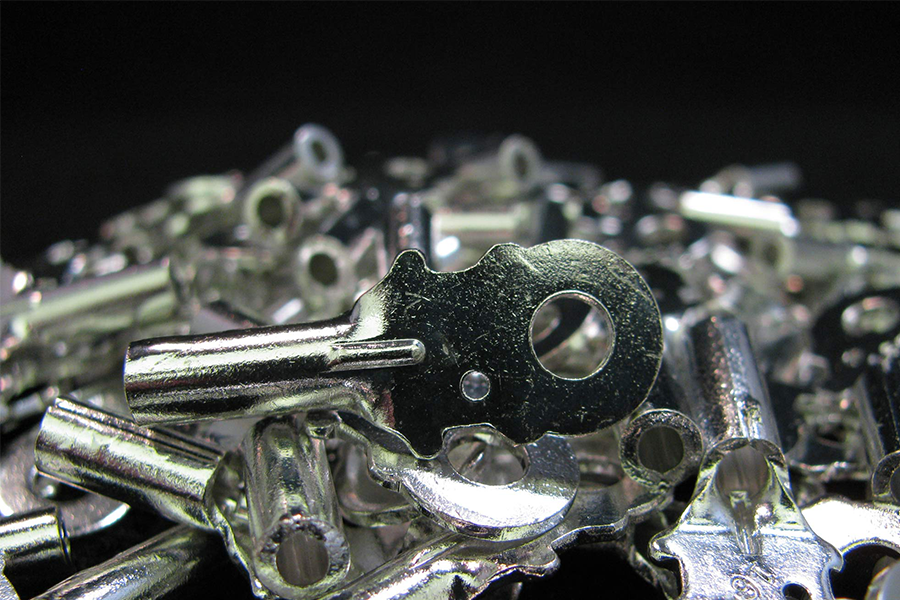
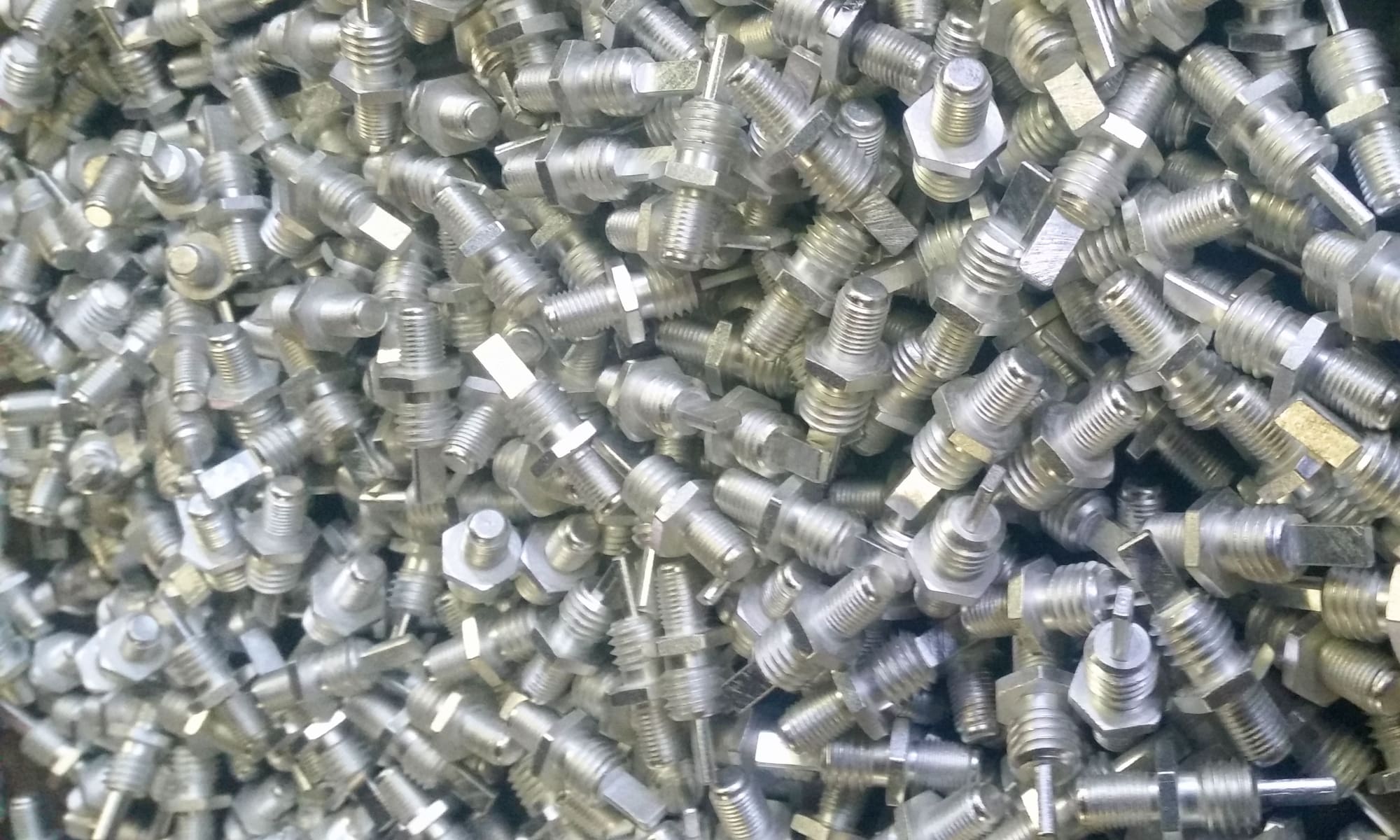
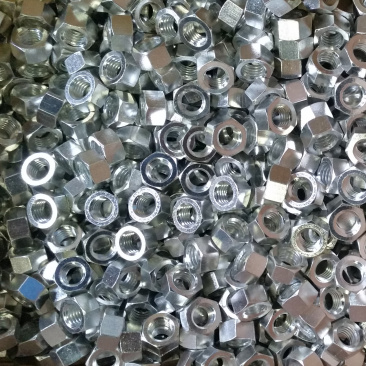
Tin Lead
[MIL-P-81728A]
Unless otherwise specified: .0003-.0005" thickness. For flow brightened electronic components .0003" maximum thickness. Excellent solderability. Either a matte or bright luster is acceptable. For electronic components, use only parts with a matte or flow brightened finish. Tin 50% to 70% by weight, lead remainder (Unless otherwise specified)
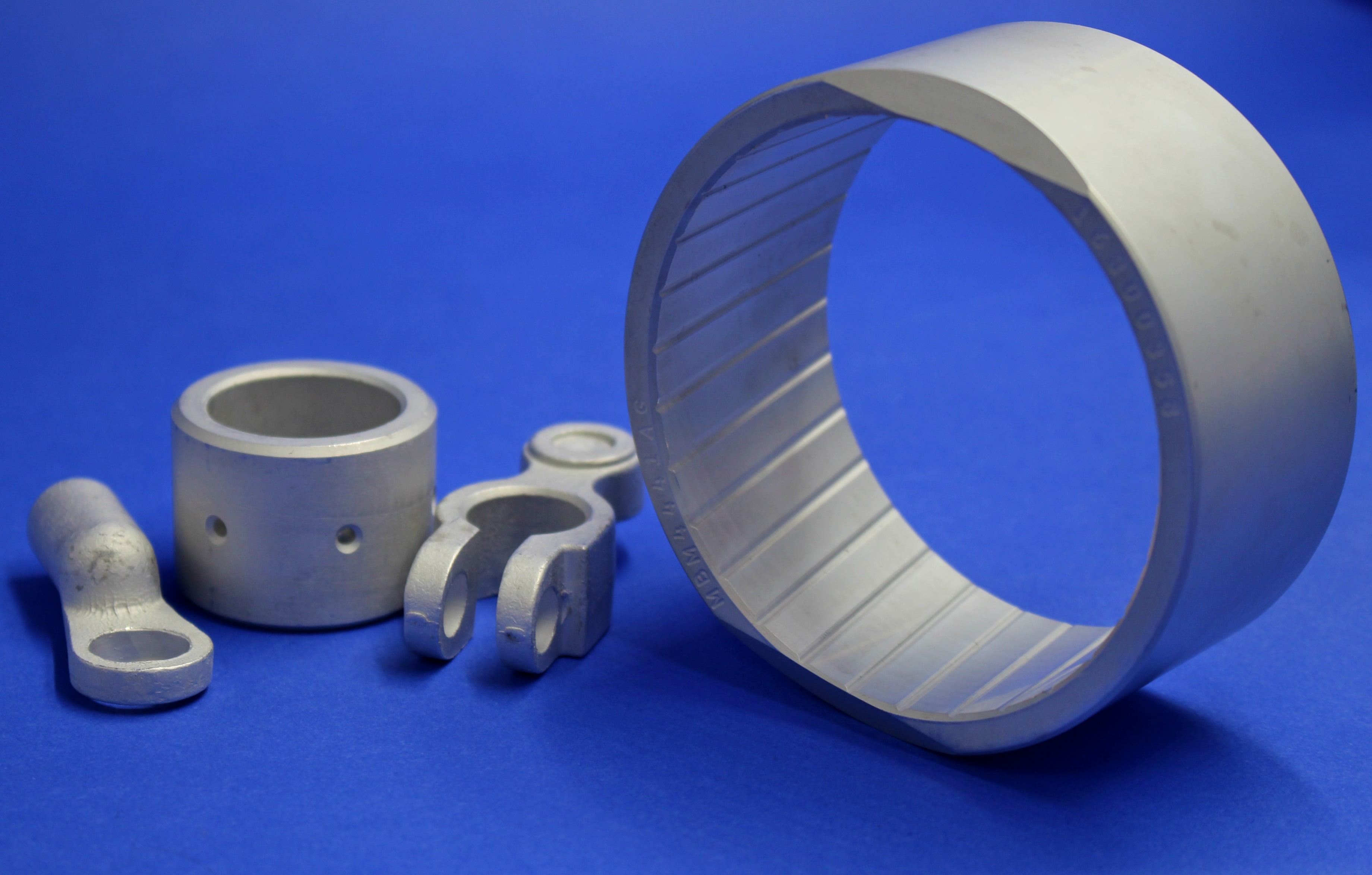
Vacuum Cadmium
[MIL-C-8837B]
Used primarily to provide corrosion resistance to ferrous parts to be free from hydrogen contamination and possible embrittlement. Recommended on steels 220,000 psi or above. Coating is applied after all machining, brazing, welding and forming has been completed. Prior to coating, all steel parts shall be stress relieved by baking at 375° ± 25°F for 3 hours if suspected of having residual tensile stresses. Immediately prior to coating, lightly dry abrasive blast areas to be coated. Cadmium coating shall not be used, if in service, temperature reaches 450°F.
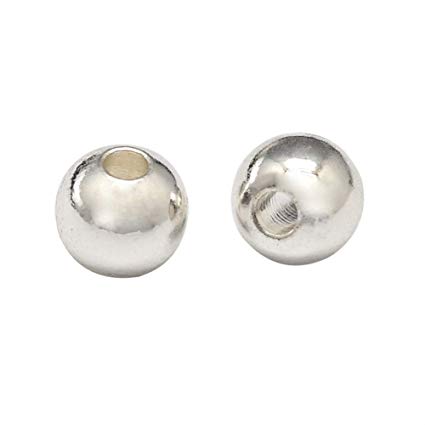
Zinc
[ASTM-B633]
This specification covers requirements for electrodeposited zinc coatings applied to iron or steel articles to protect them from corrosion. It does not cover zinc-coated wire or sheets. High strength steels (tensile strength greater than 1700 MPa) shall not be electroplated. Stress relieve all parts with ultimate tensile strength 1000 MPa and above at minimum 190°C for 3 hours or more before cleaning and plating. Hydrogen embrittlement relieve all electroplated parts of 1200 MPa tensile strength or higher by baking at 190°C for 3 hours or more within 4 hours after electroplating.
Zinc plated components vary from one industry to another. They share, however, the most basic of metal finishing requirements: durable finish; aesthetically pleasant appearance; and cost effec- tive processing.
The designer and engineer must take into account several considerations to stay at the forefront of the finish potential. Not the least of which is the environmental regulations impact on the future of the selected finish.
Zinc and Zinc alloys, such as zinc-nickel will surely play a more significant role as metals such as Cadmium are destined for the elements' Valhalla. Such sacrificial metals, as Zinc, have significant corrosion resistance properties in spite of their apparent softness and propensity to scratching.
Supplementary treatments shall be in accordance with Recommended Practice B201. Type IV shall be in accordance with Recommended Practice D2092.
| Types | Test Period (Hours.) |
|---|---|
| II | 96 |
| III | 12 |
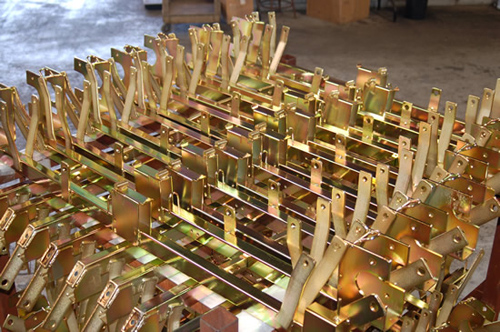
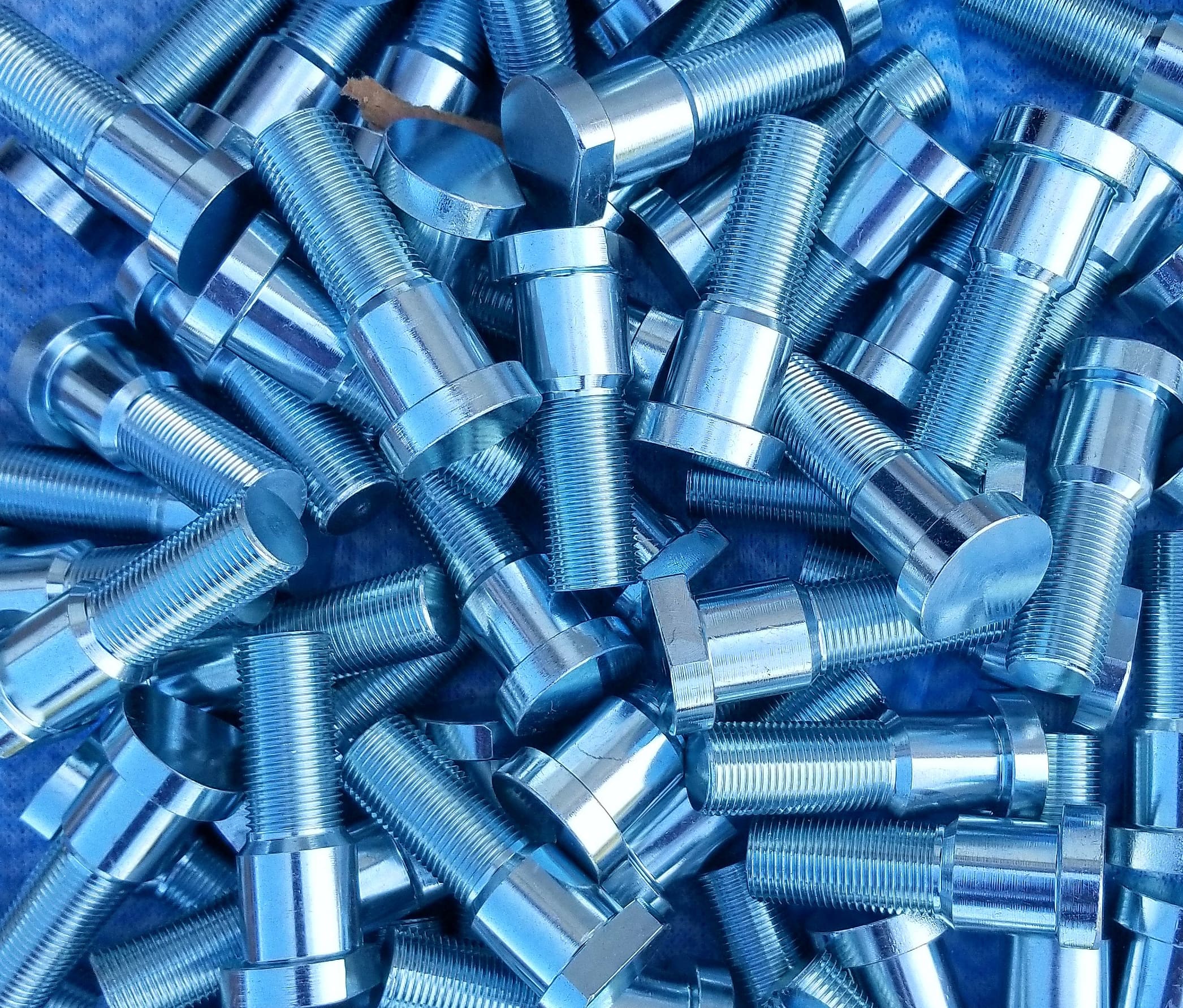
| ClassificationA Number and Conversion Coating Suffix | Service Condition | Thickness Minimum (µm) |
|---|---|---|
| Fe/Zn 5 | SC 1 (mild) | 5 (.0002") |
| Fe/Zn 8 | SC 2 (moderate) | 8 (.0003") |
| Fe/Zn 12 | SC 3 (severe) | 12 (.0005") |
| Fe/Zn 25 | SC 4 (very severe) | 25 (.001") |
| A
Iron or steel with zinc electroplate. Numeral indicates thickness in micrometers.
B Where service conditions are valid only for coatings with chromate conversion coating. Type II for SC 4 and SC 3 and Type III for SC 2 and SC 1. |
||
Vacuum Cadmium
[MIL-C-8837B]
Used primarily to provide corrosion resistance to ferrous parts to be free from hydrogen contamination and possible embrittlement. Recommended on steels 220,000 psi or above. Coating is applied after all machining, brazing, welding and forming has been completed. Prior to coating, all steel parts shall be stress relieved by baking at 375° ± 25°F for 3 hours if suspected of having residual tensile stresses. Immediately prior to coating, lightly dry abrasive blast areas to be coated. Cadmium coating shall not be used, if in service, temperature reaches 450°F.

Laser Engraving
[MIL-STD-130]
Lasers are used for everything these days. If you pair great designs with a laser machine that will result in a one of a kind product. From home decoration to industrial marking, laser is a faster and more convenient alternative to traditional manufacturing.



Titanium Nitride
[PVD]
Advantages
- PVD coatings are sometimes harder and more corrosion resistant than coatings applied by the electroplating process. Most coatings have high temperature and good impact strength, excellent abrasion resistance and are so durable that protective topcoats are almost never necessary.
- Ability to utilize virtually any type of inorganic and some organic coating materials on an equally diverse group of substrates and surfaces using a wide variety of finishes.
- More environmentally friendly than traditional coating processes such as electroplating and painting.
- More than one technique can be used to deposit a given film.
Disadvantages
- Specific technologies can impose constraints; for example, line-of-sight transfer is typical of most PVD coating techniques, however there are methods that allow full coverage of complex geometries.
- Some PVD technologies typically operate at very high temperatures and vacuums, requiring special attention by operating personnel.
- Requires a cooling water system to dissipate large heat loads.
Applications
- Aerospace
- Automotive
- Dies and moulds for all manner of material processing
- Cutting tools
- Firearms
- Optics
- Watches
- Jewellery
- Thin films (window tint, food packaging, etc.)
- Darts barrels
- Metals (aluminium, copper, bronze, etc.)
